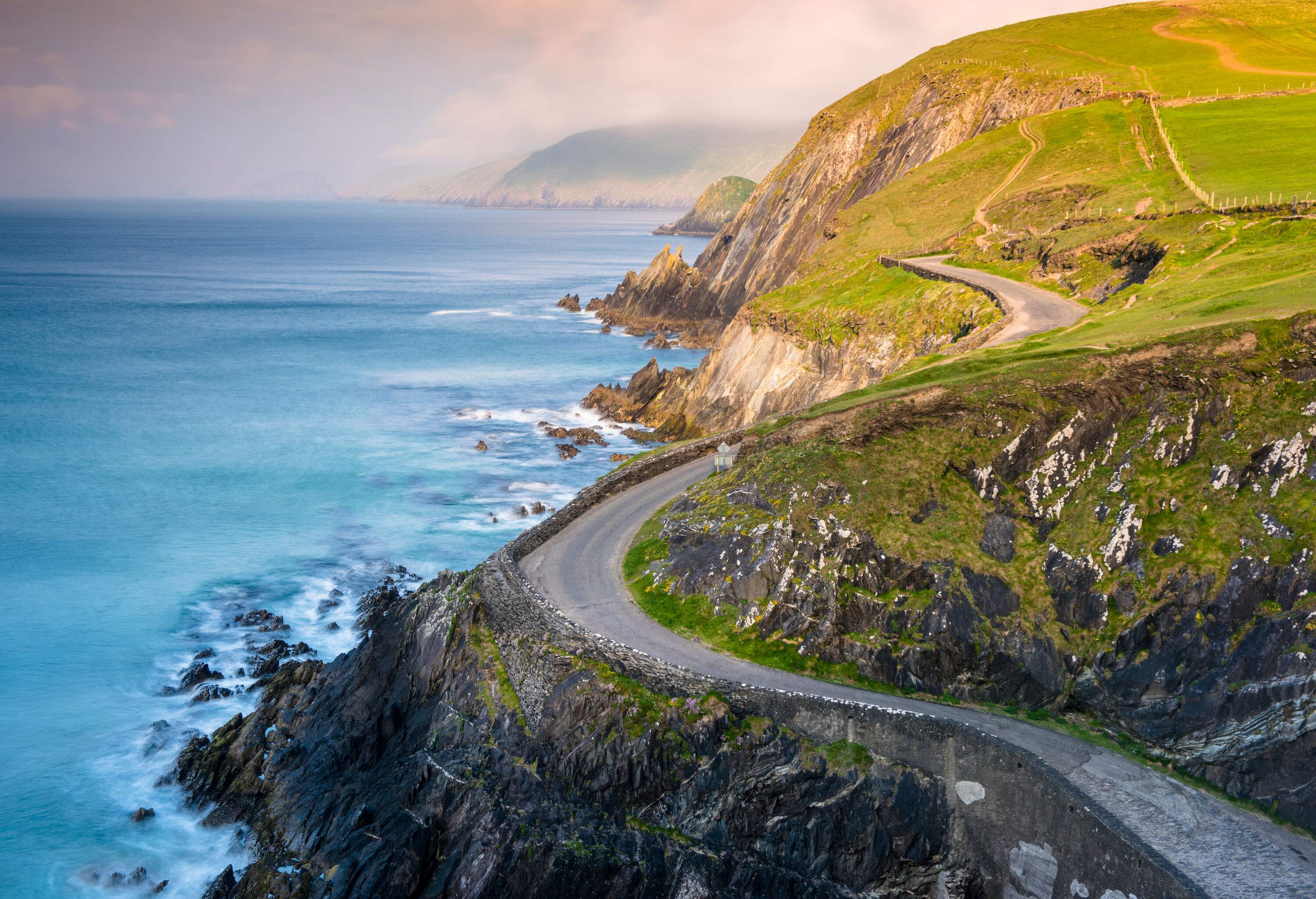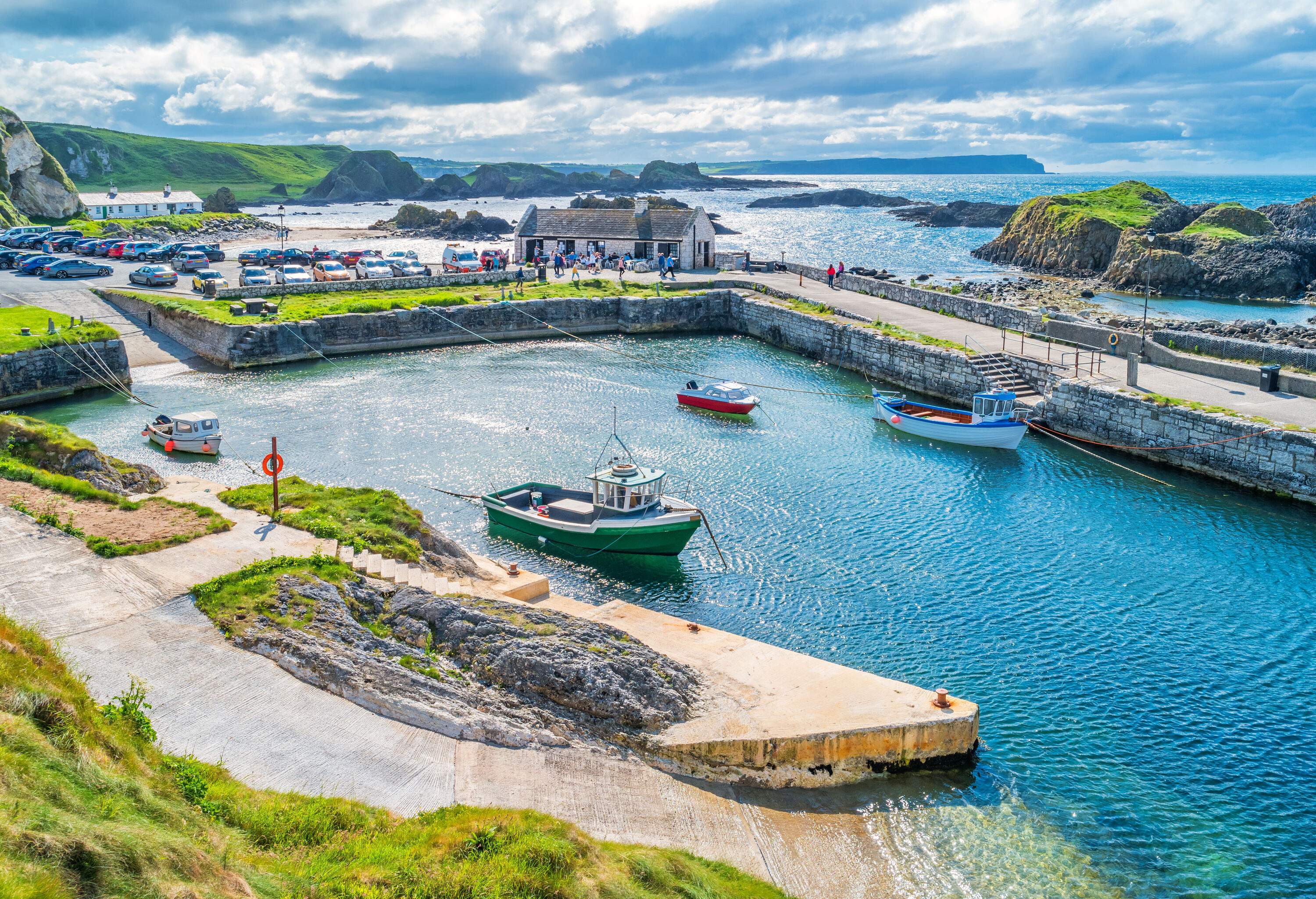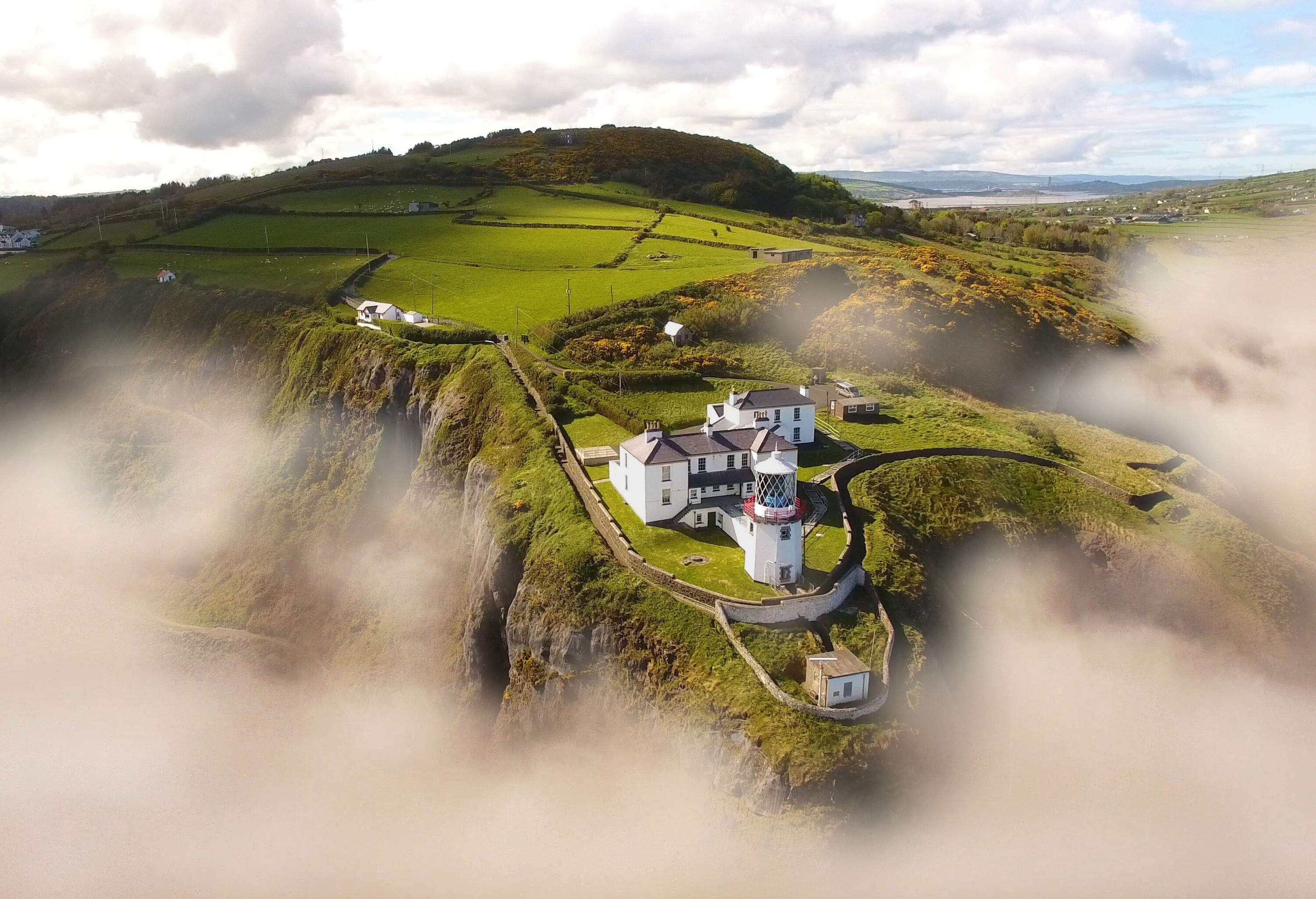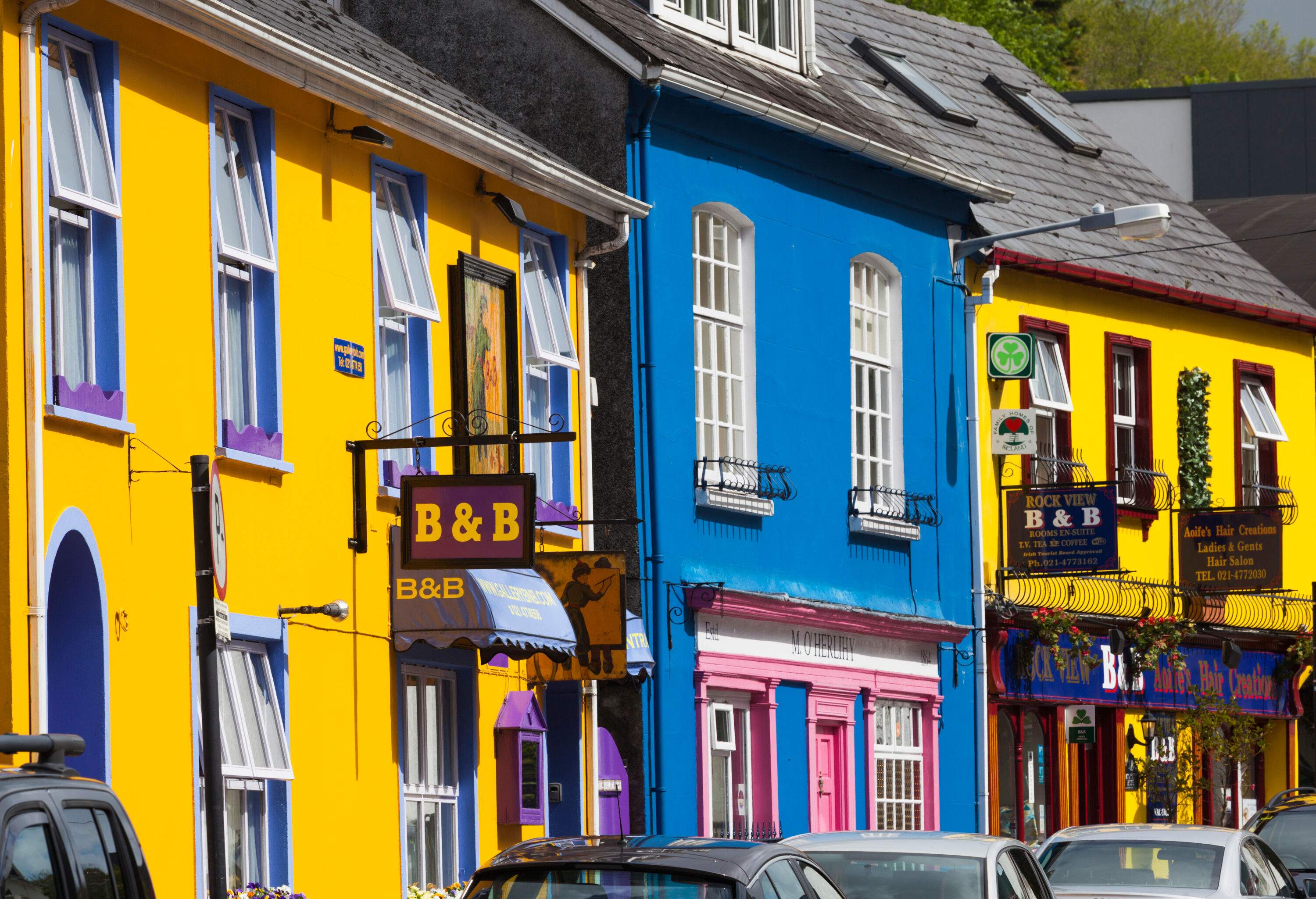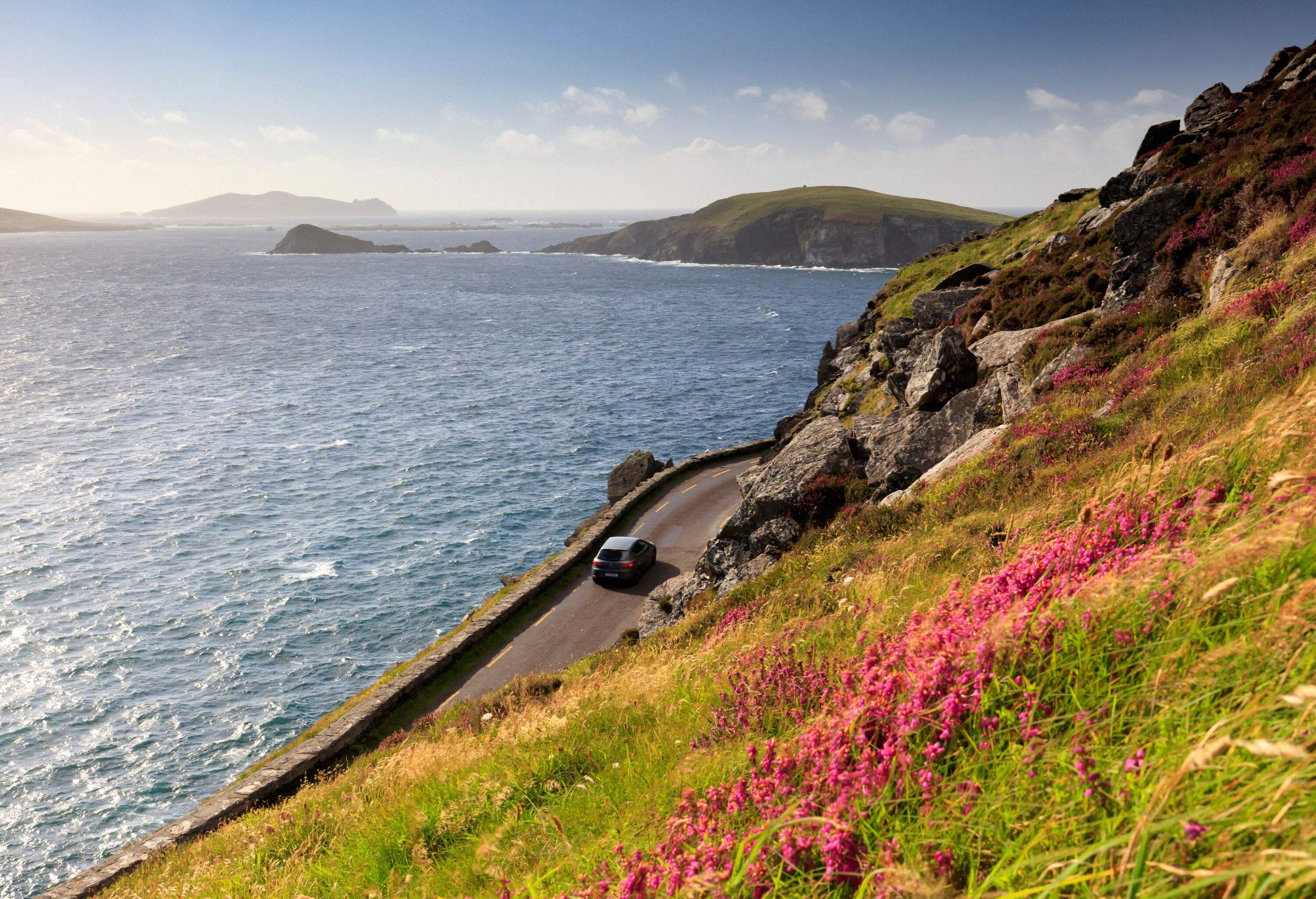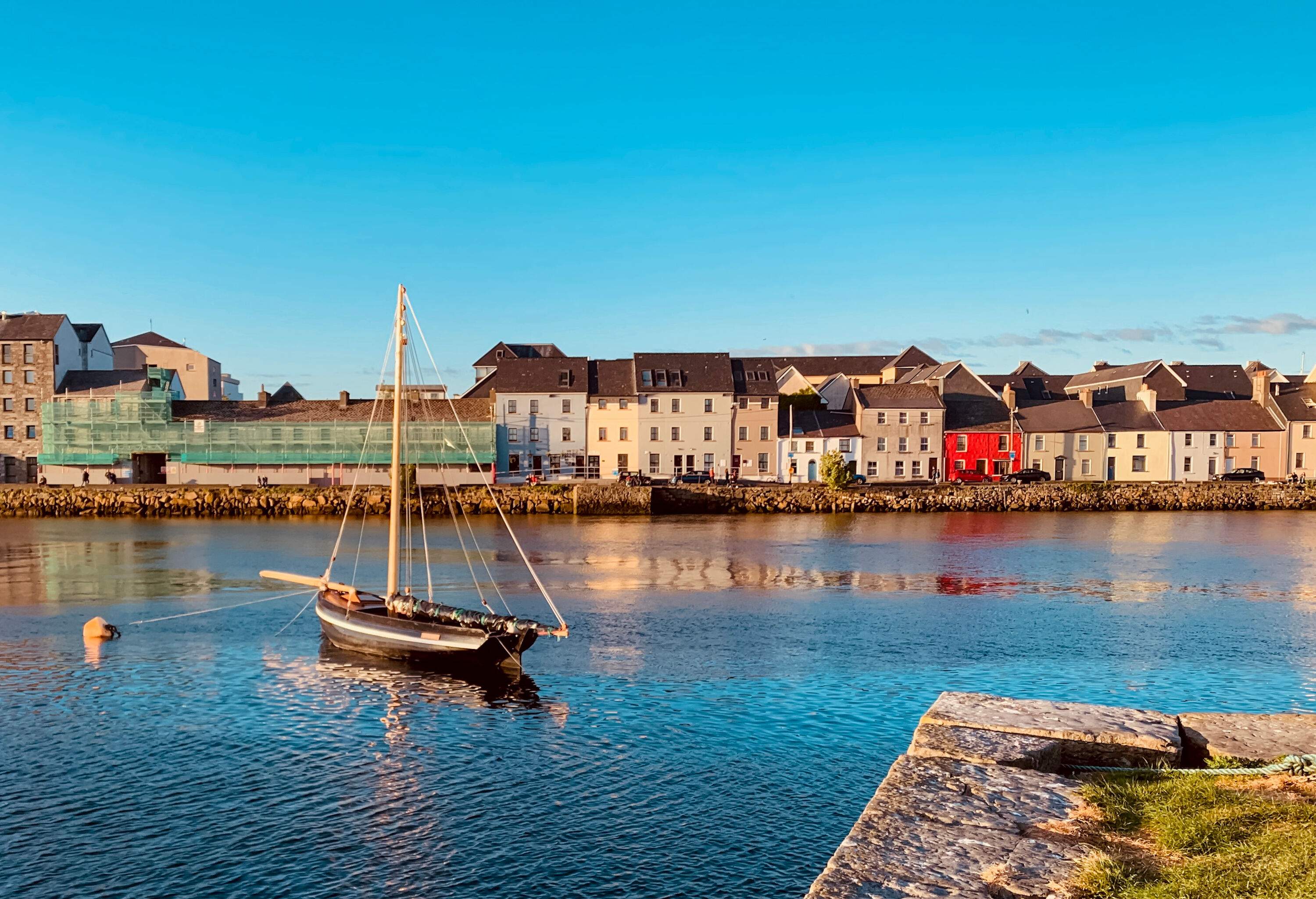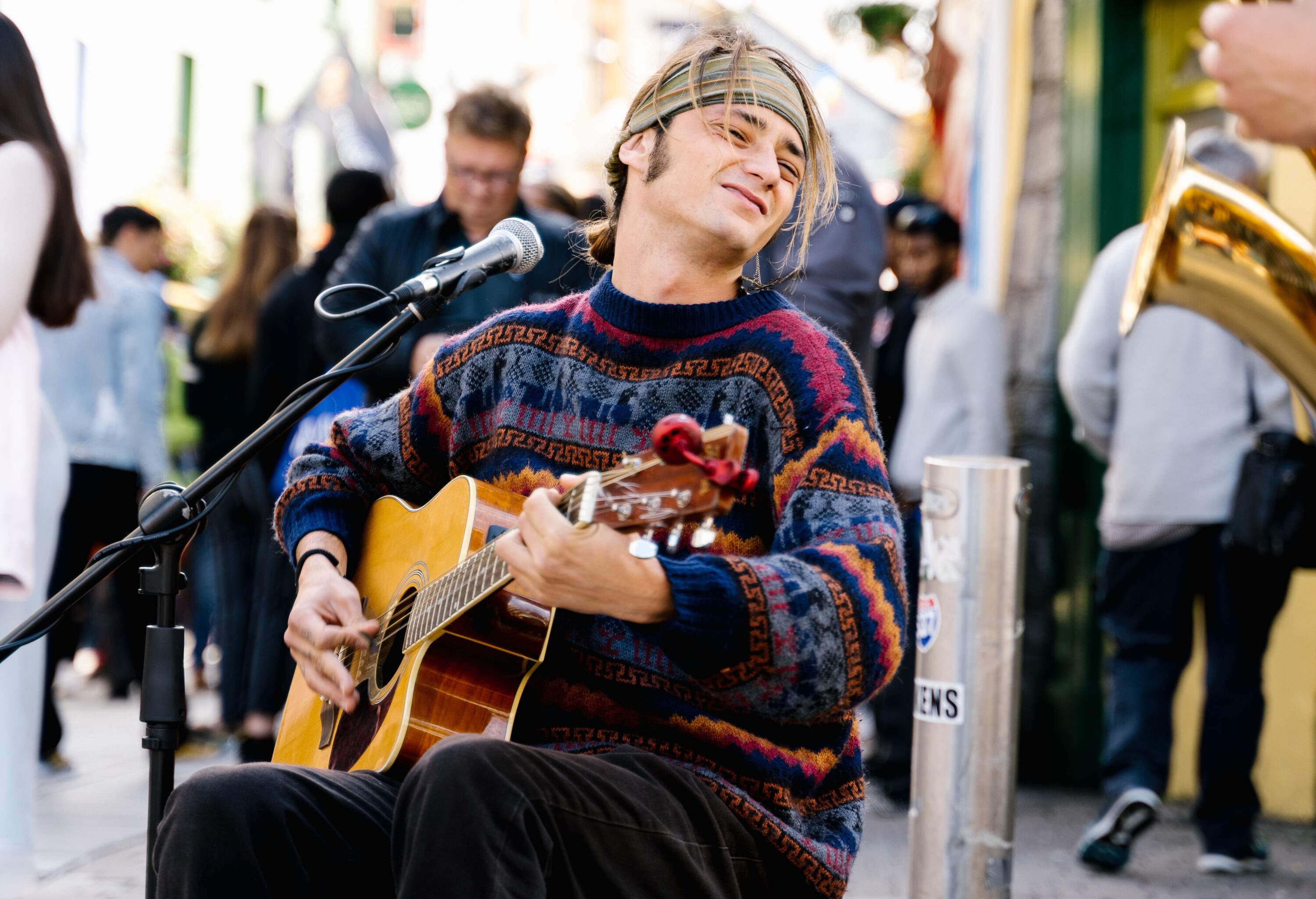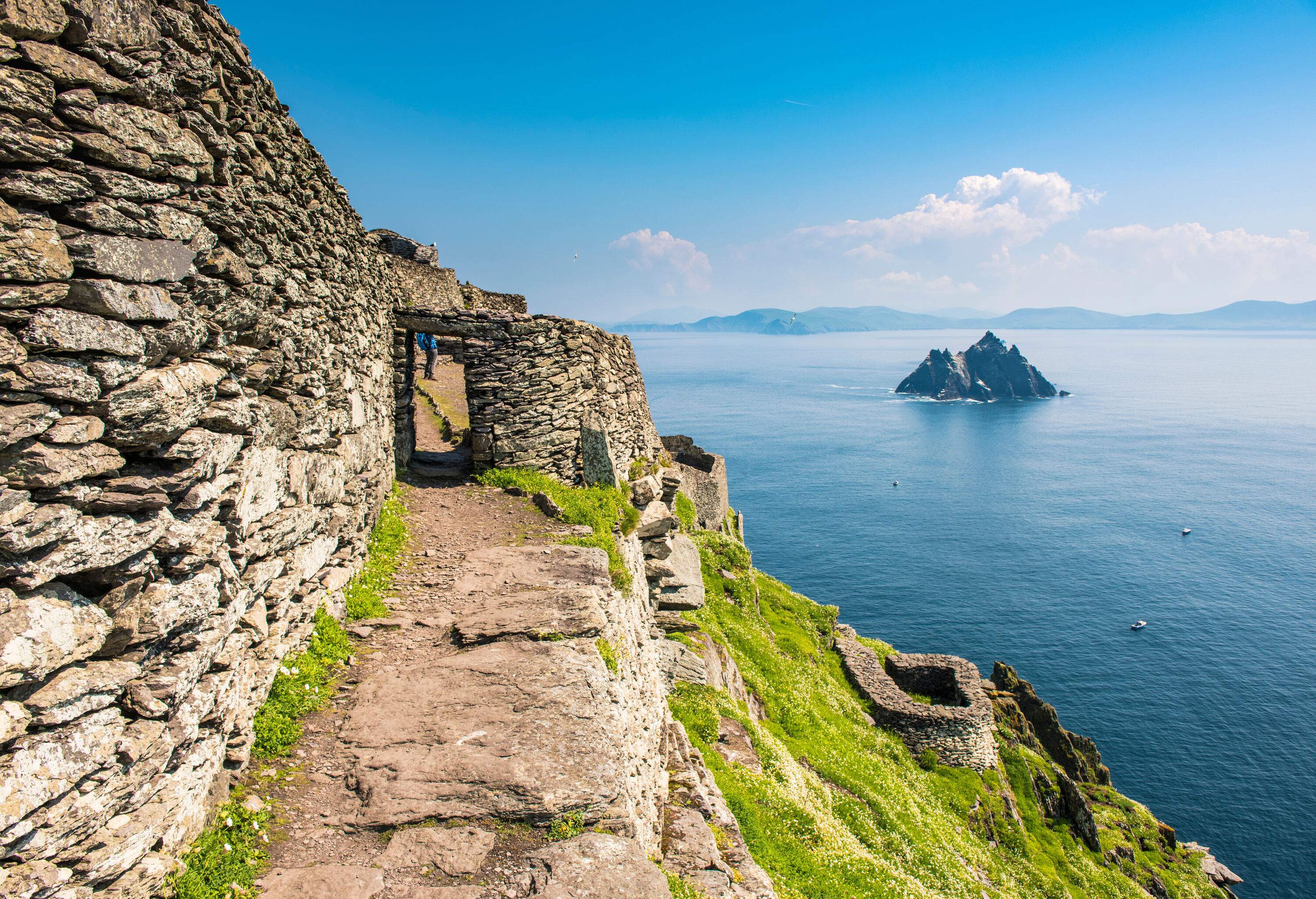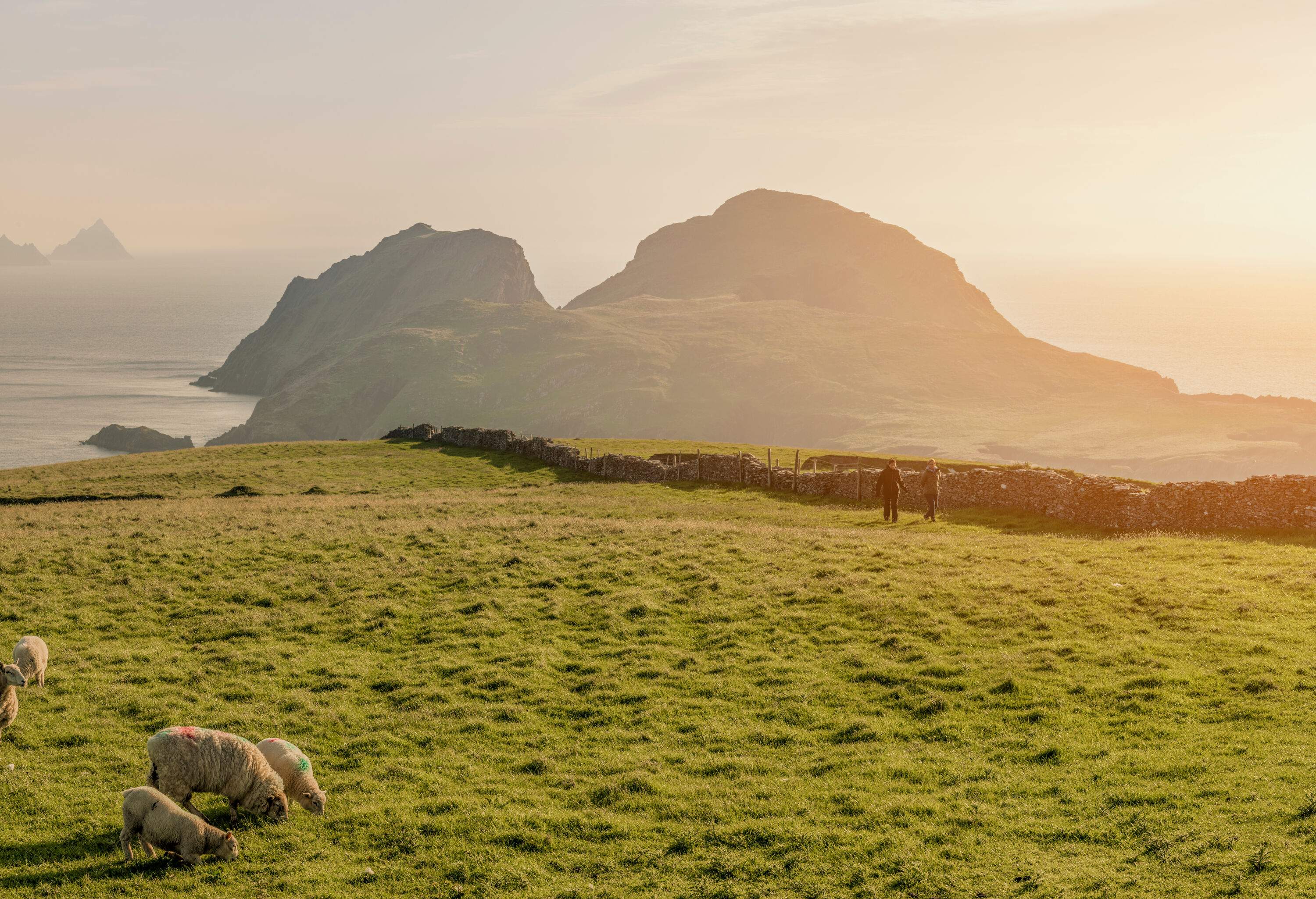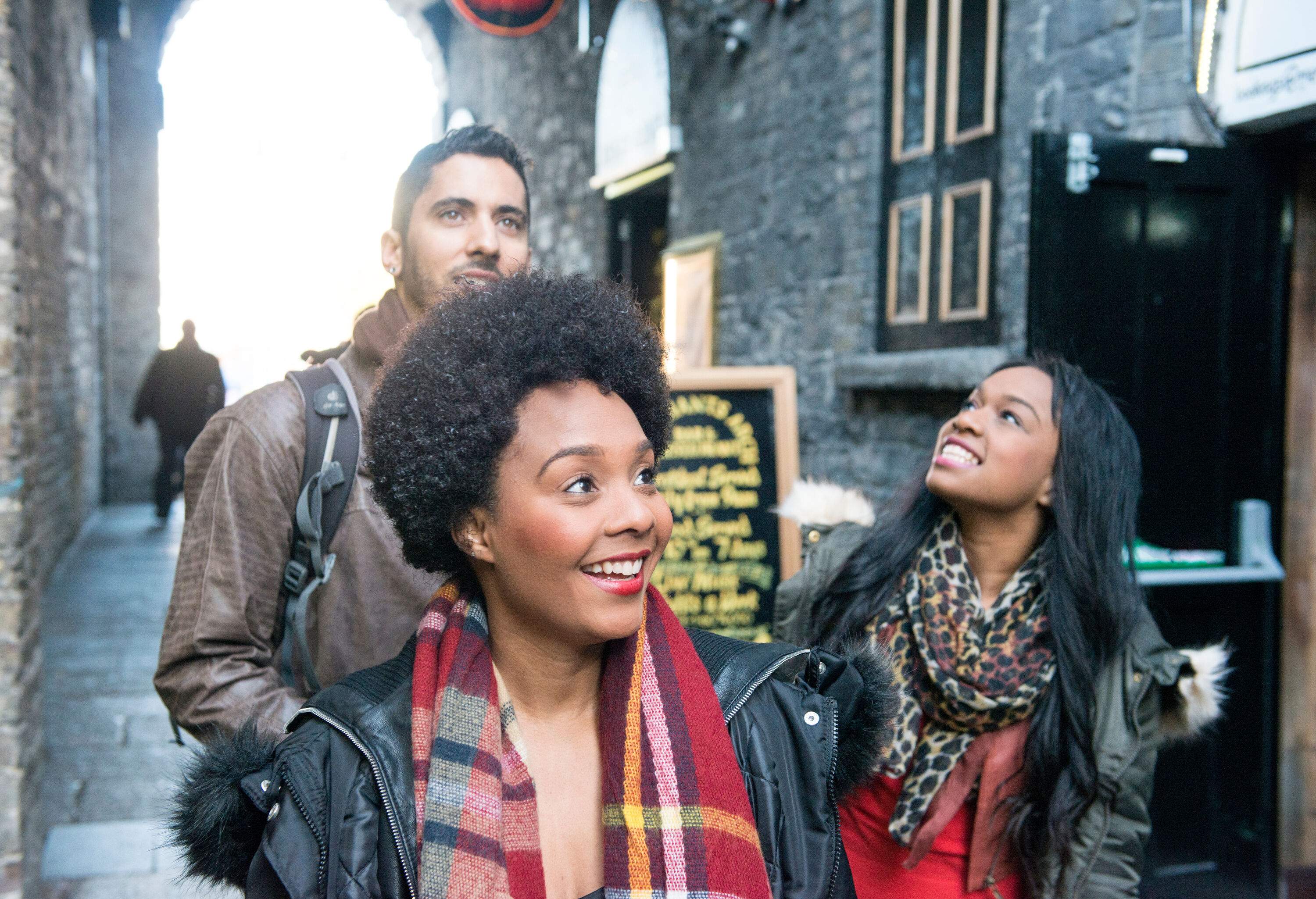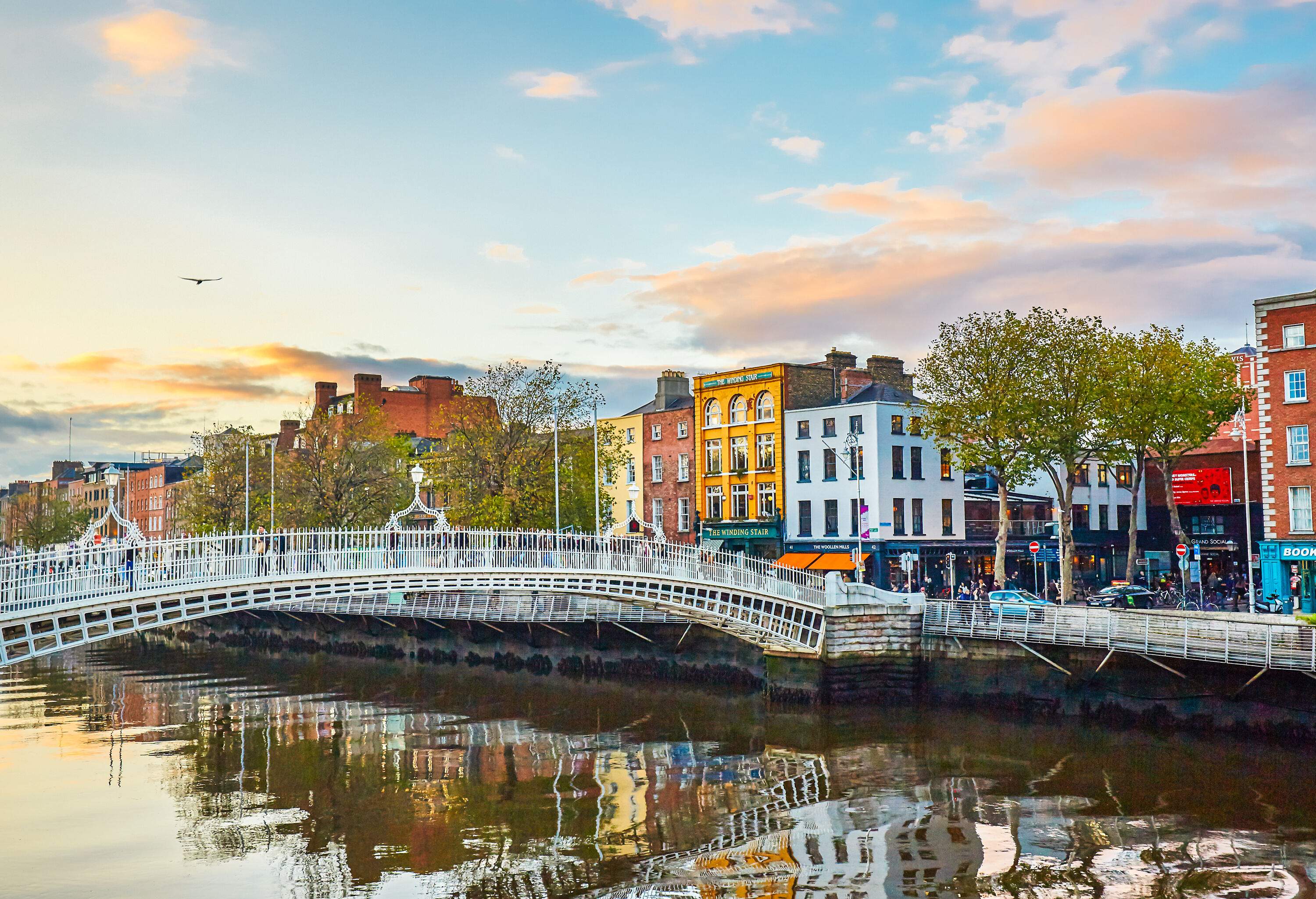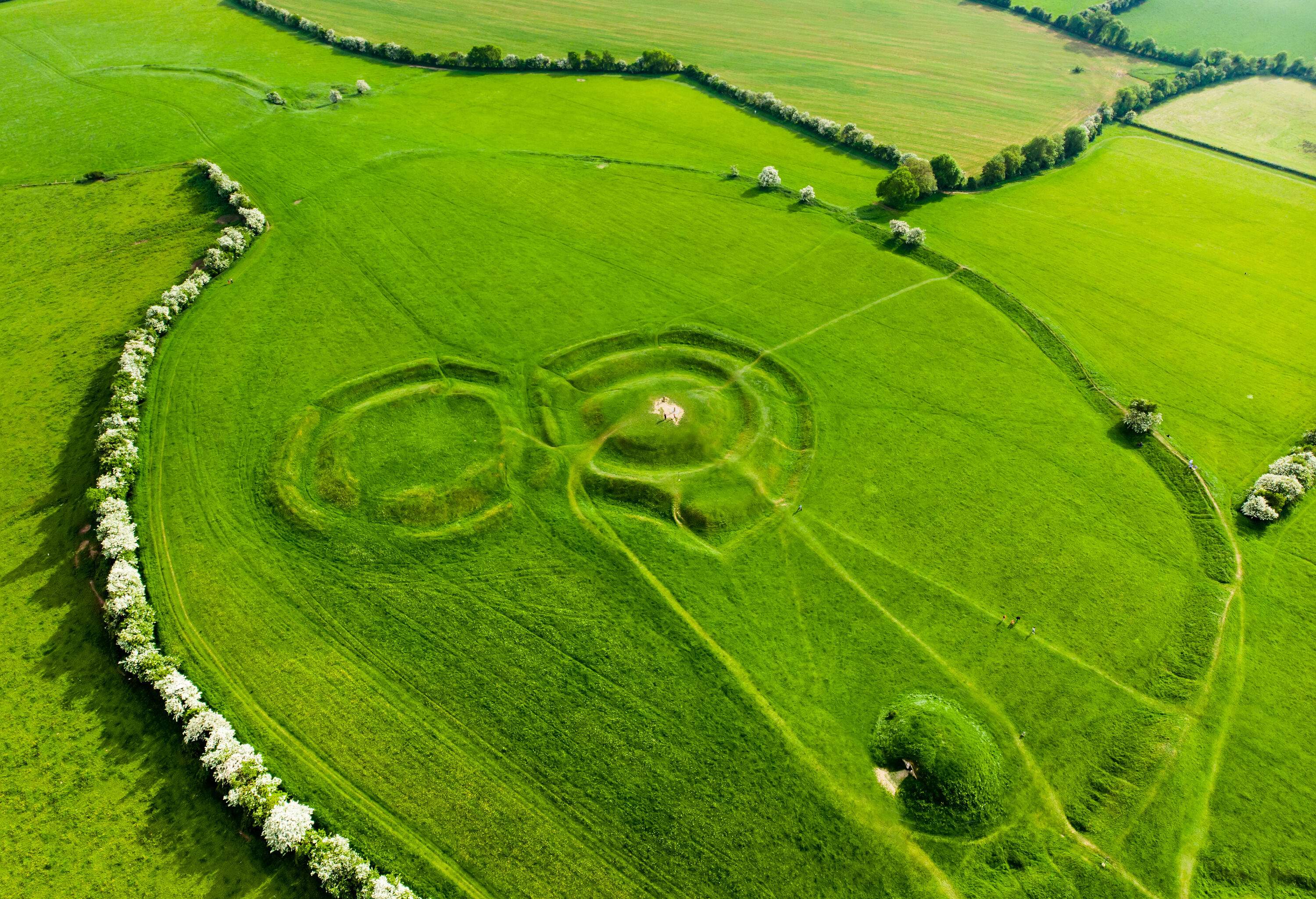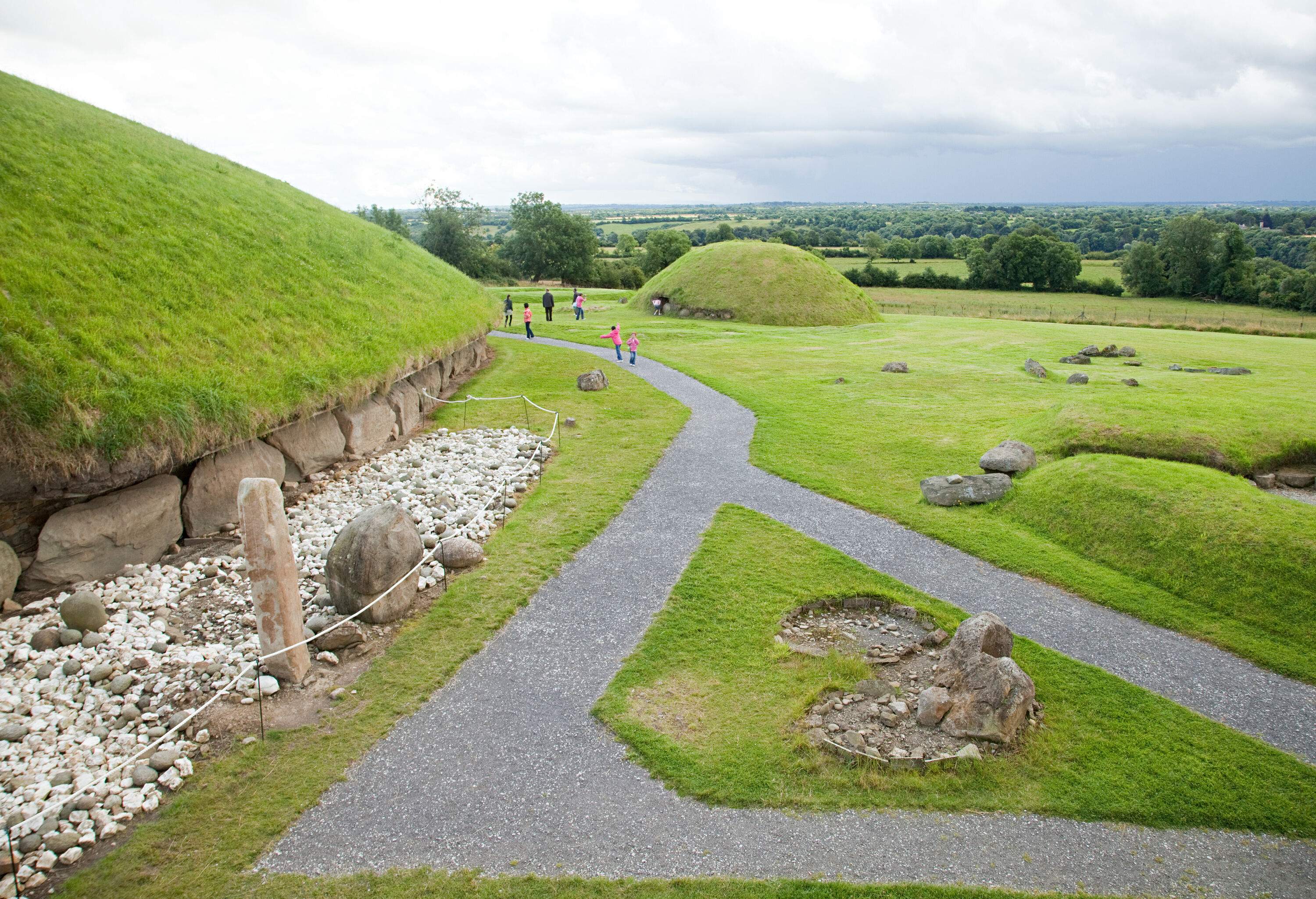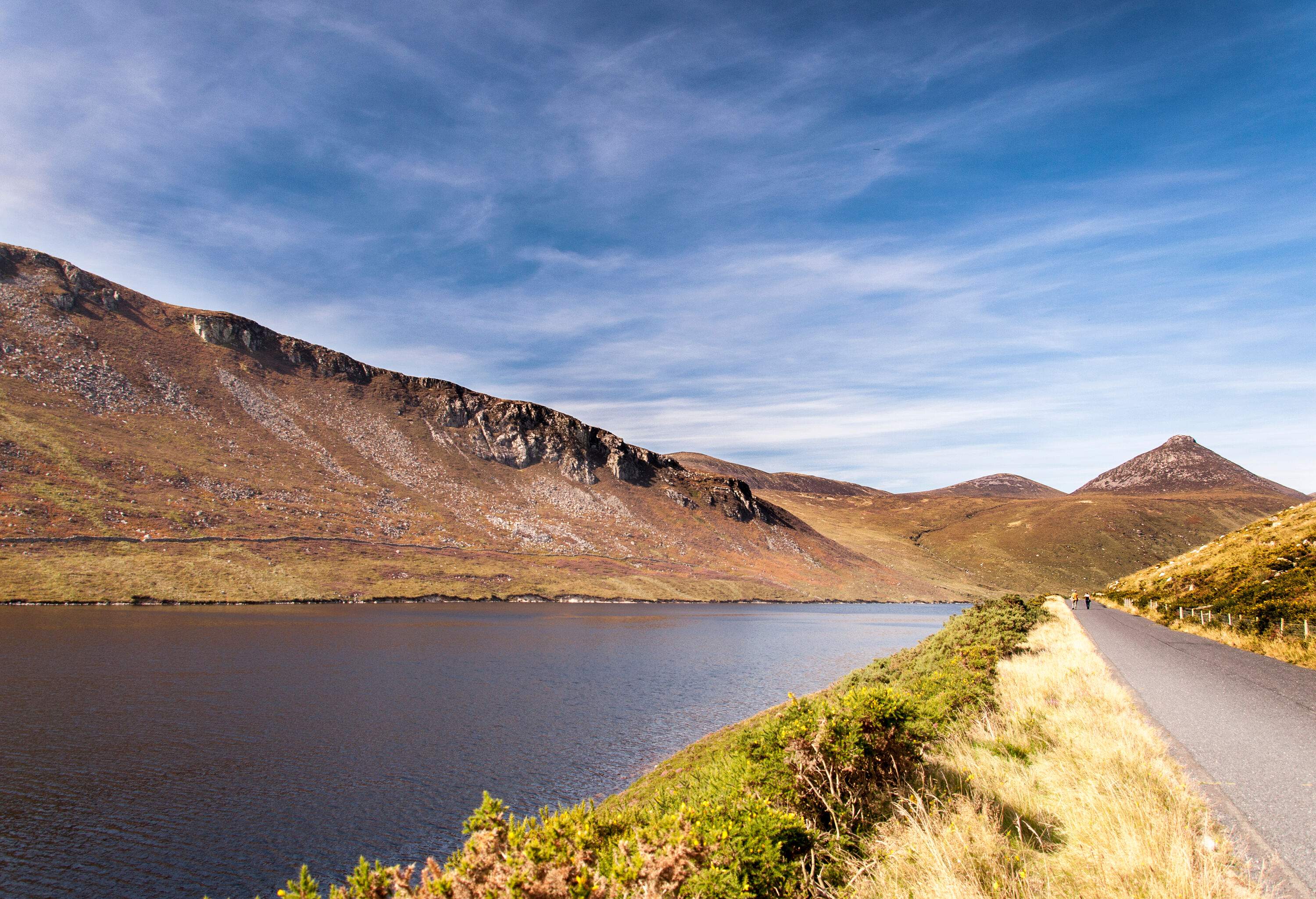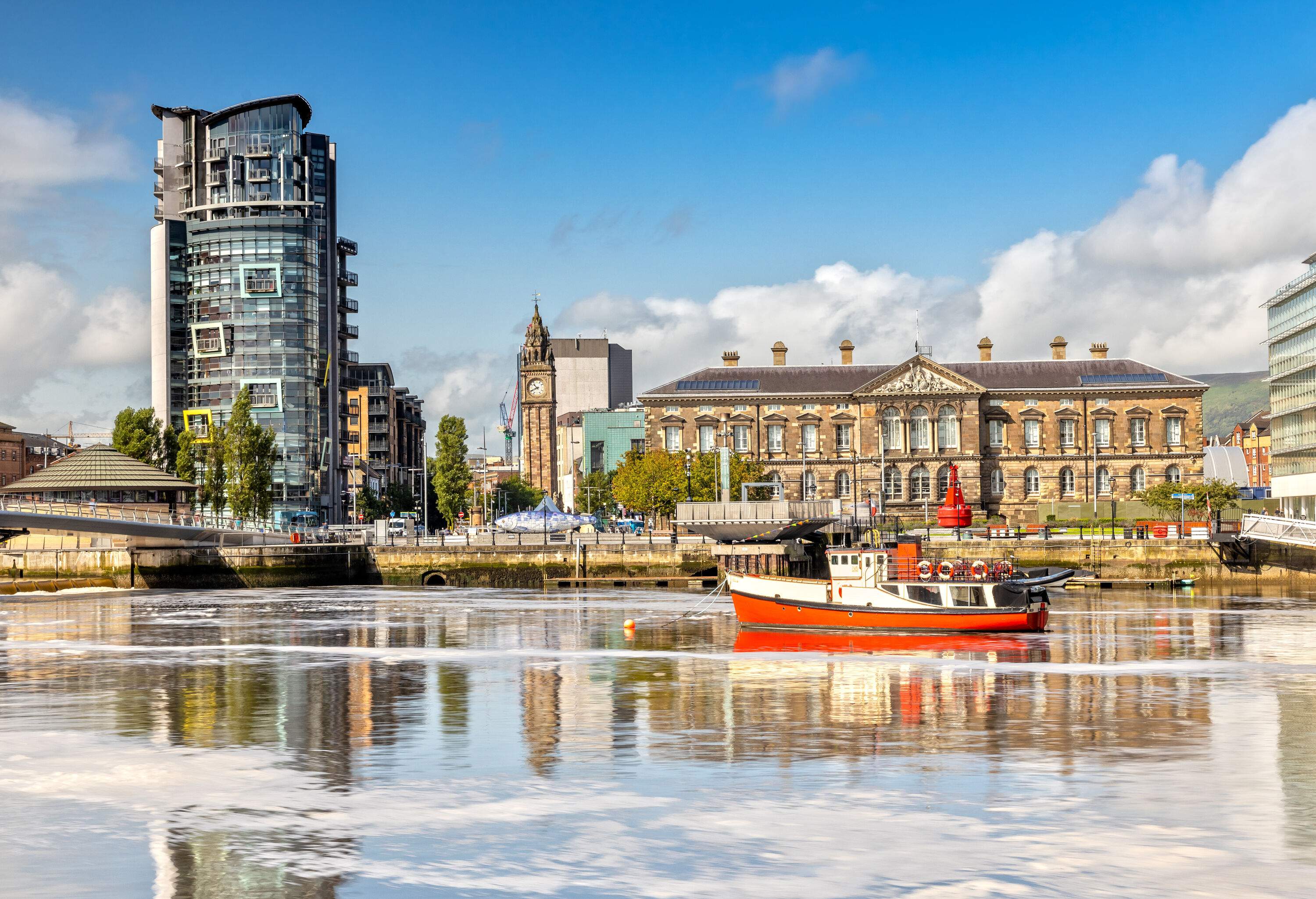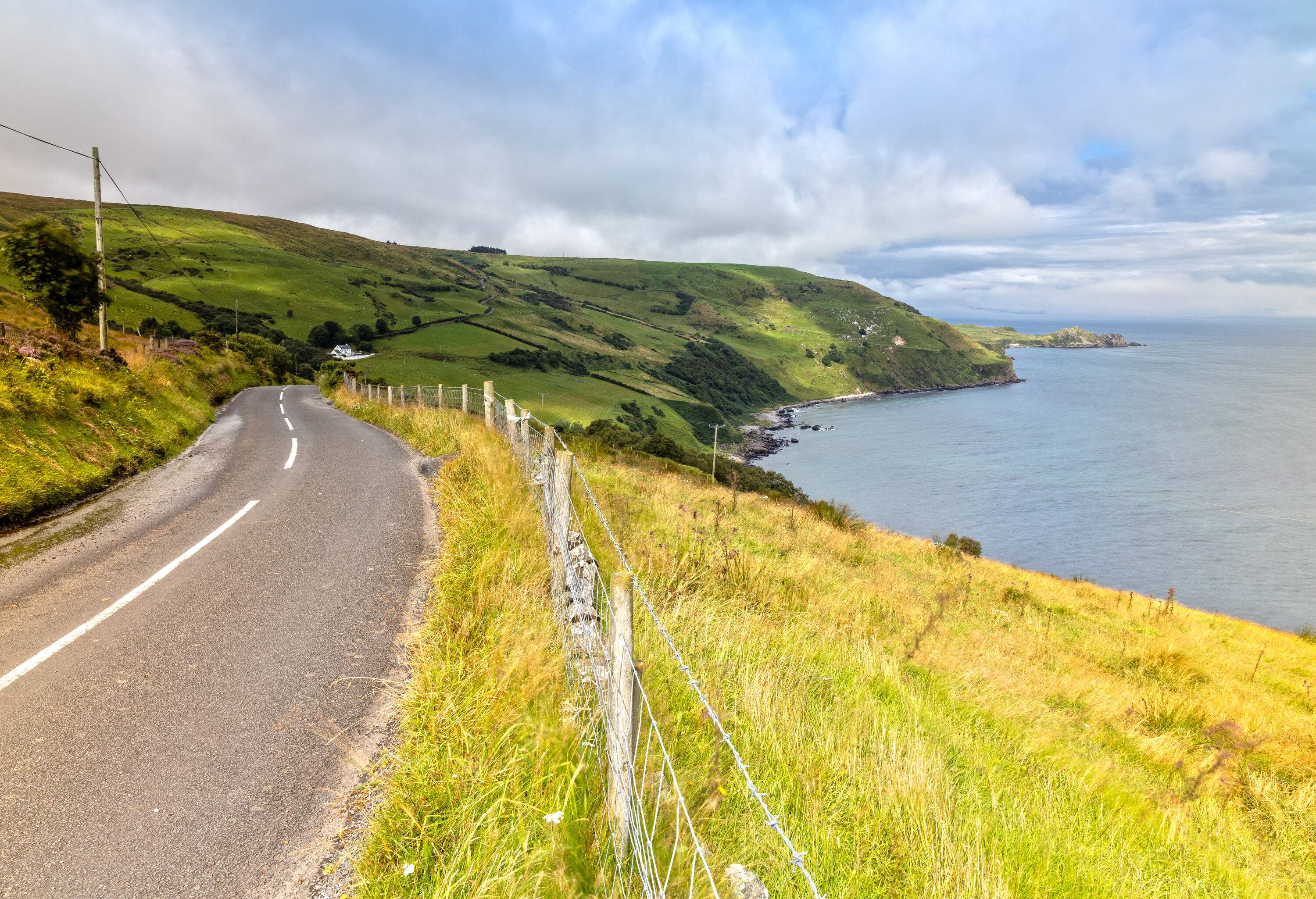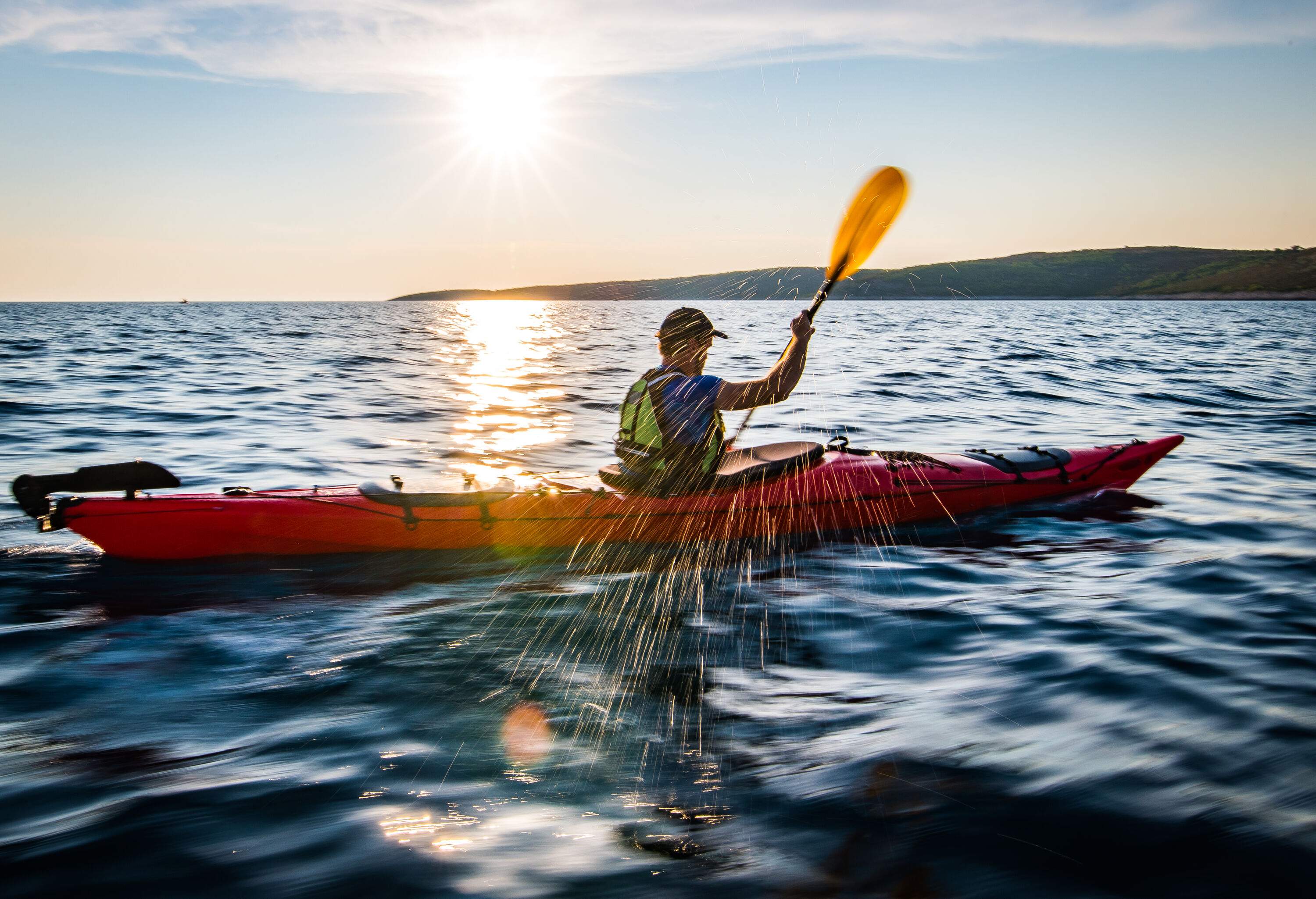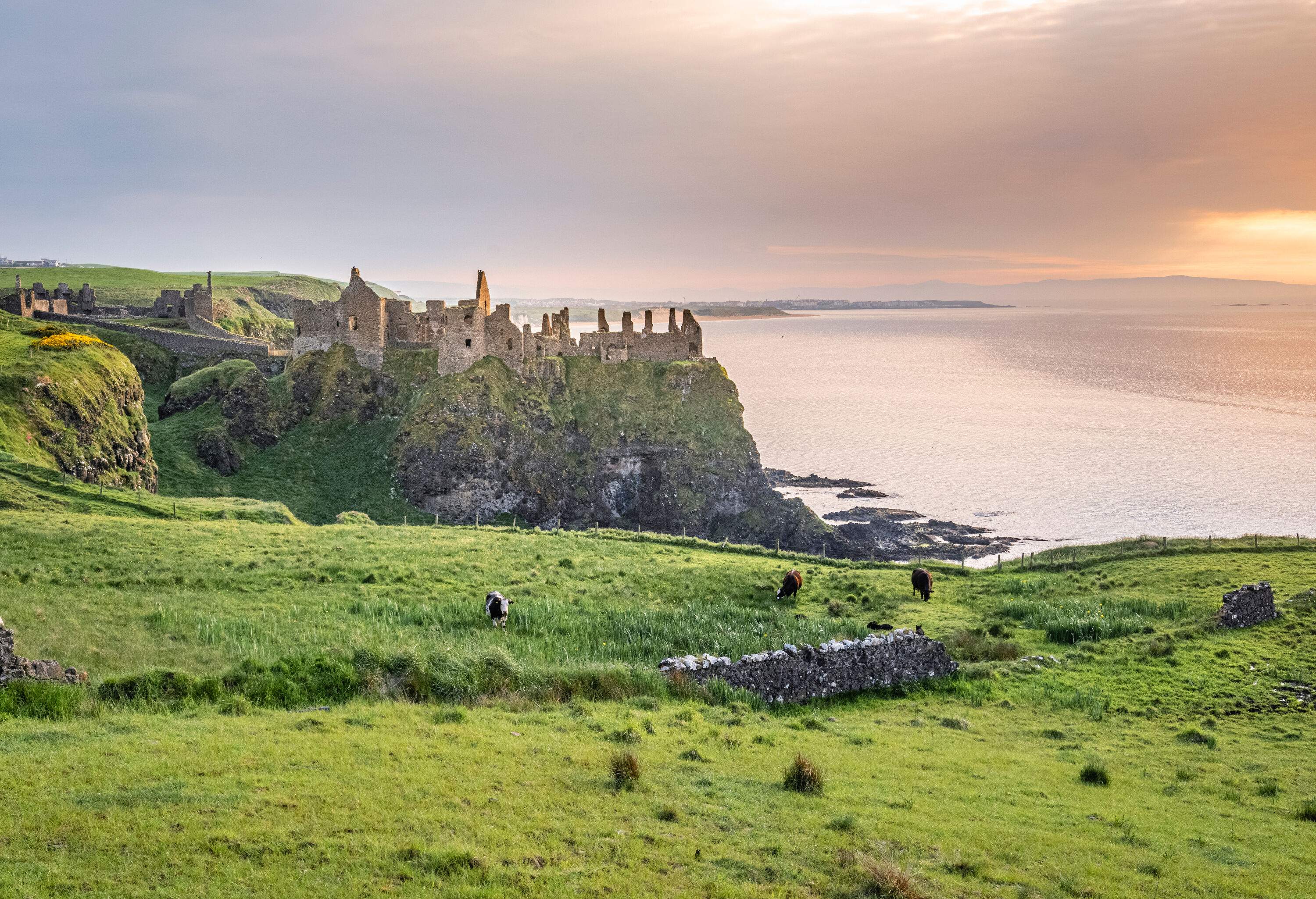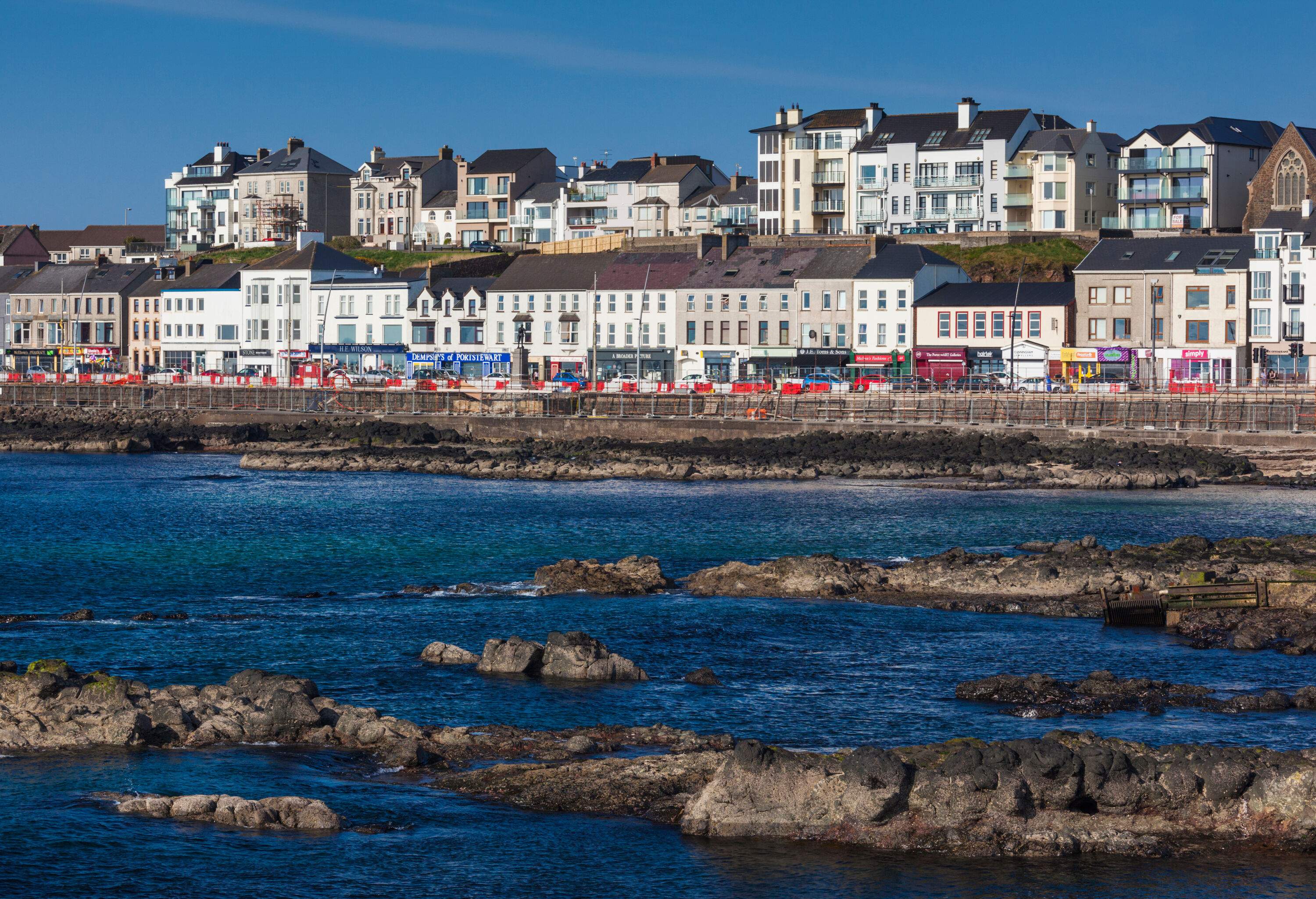Ireland, with its breathtaking scenery, charming towns, and friendly locals, offers an ideal setting for an epic road trip adventure. Join us as we map out the ultimate Ireland road trip, where every twist and turn reveals another piece of the island’s timeless beauty.
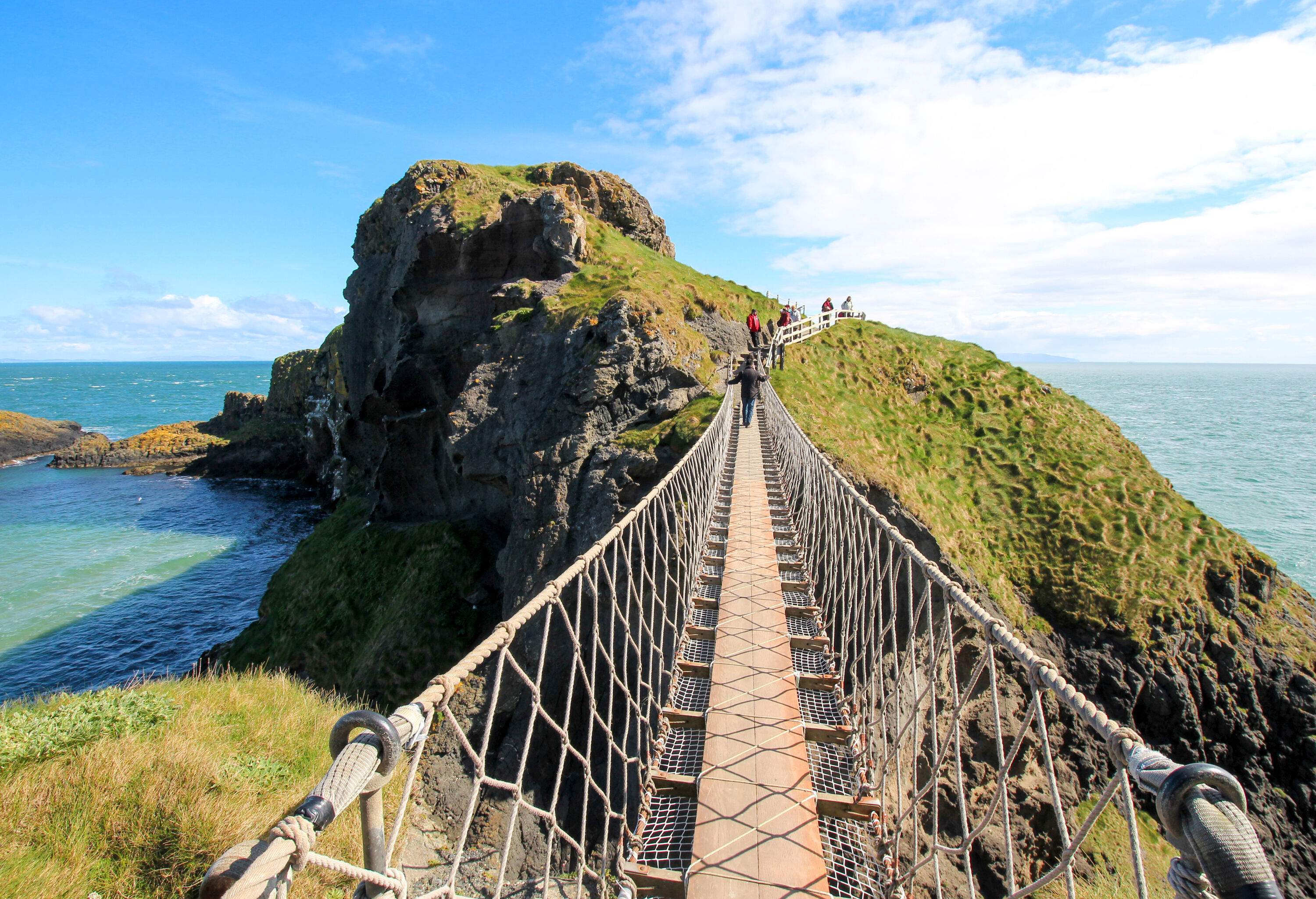
How to get to Ireland?
From the U.S. there are plenty of direct flights to Ireland’s capital Dublin. A roundtrip ticket from NYC to Dublin will cost on average $749 and $932 from LAX to Dublin. You can also find direct connections from the U.S. to Northern Ireland’s capital Belfast.
To start your Ireland road trip in Galway, you should pick up your rental car from Dublin airport and drive. The journey to the west coast will take about 2 hours.
Suitable cars for your road trip in Ireland

For the ultimate Irish experience, you want a rental car for your road trip that is comfortable, reliable and has good gas efficiency. You also want a car that is not too small so all passengers can travel without feeling cramped. On the other hand, you don’t want a car bigger than necessary so you can easily access narrow roads and small parking spaces. There are no huge highways in Ireland!
If you’re traveling in the summer, air conditioning is highly recommended and of course, you want to make sure to get comprehensive insurance for your rental car. Read this article for some more tips for driving in Ireland.
Best time to take an Irish road trip
As a British Irish couple who have traveled widely across both Northern Ireland (part of the United Kingdom) and the Republic of Ireland (a separate country), we know the best time for a road trip is during the late spring and early summer (May, June, and July) and early autumn (September and October) months.
During these seasons, you’ll experience warmer weather, fewer crowds, and longer daylight hours. In spring, the countryside bursts to life with budding foliage, while in autumn, you’ll be treated to a riot of flaming colors and harvest celebrations.
Keep in mind that the weather in Ireland can be unpredictable with rain a regular feature year-round. It’s not called the Emerald Isle for nothing!
Estimate your road trip budget
Before finalizing your plans, it’s helpful to know how much road-tripping in Ireland will cost. Here are some costs, based on comparisons from hundreds of travel providers to help you work out your budget:
- Average price for one night in a mid-range double hotel room in Dublin: €208 ($225)
- Average price for one night in a hostel in Dublin: €129 ($140)
- Average daily rate for a rental car in Dublin: €63 ($68)
- Cost of 1 gallon of gas in Dublin: €6.67 ($7.26) in June 2024, according to numbeo.com (you’ll need approx. 4 gallons to cover 100 miles)
Based on a 5-day road trip in Ireland covering 300 miles we would expect the costs to range from €525 to €725 ($570 to $790) per person based on two people sharing the costs, depending on what kind of accommodation you choose.
West Coast Ireland road trip: 5 days itinerary
Day 1: Galway (one night)
Vibrant and lively, Galway exudes a slightly wild and bohemian charm that perfectly complements its rich culture, artistry, fabulous local cuisine, and music scene.
At the heart of the city lies the bustling 18th-century Eyre Square, a lively meeting point adorned with modern sculptures and trees, and the Latin Quarter, where historic stone-clad buildings house cozy cafés, independent boutiques, and local art galleries.
Where to stay in Galway: The Dean Galway is centrally located and has its own parking.
Day 2: Loop Head (one night)
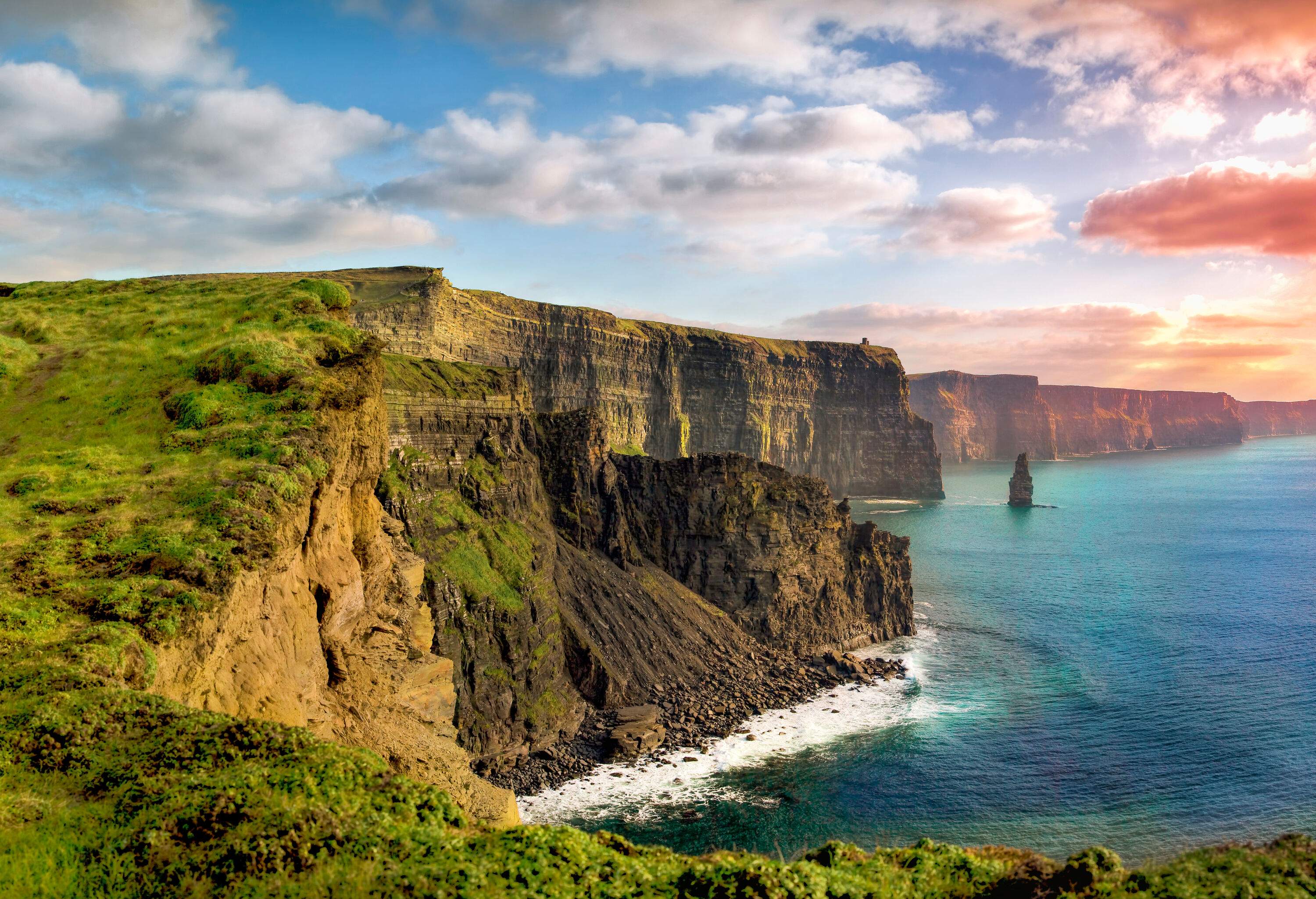
Distance from Galway: 164 km/ 102 miles – 3 hours
Make an early start today as you’ll be stopping en route to see two of Ireland’s behemoths: the other-worldly landscape of the Burren and the majestic Cliffs of Moher.
The Burren is a unique karst environment renowned for its rugged beauty and rich biodiversity. The distinctive terrain is characterized by vast expanses of limestone pavement, where deep fissures known as grikes separate flat-topped slabs of rock.
Next along the route and rising dramatically from the Atlantic Ocean, the Cliffs of Moher are one of the country’s most iconic natural landmarks. Stretching for approximately 14 km along County Clare’s rugged coastline, these incredible cliffs reach heights of over 700 feet at their highest point.
An hour and a half to the south is stunning Loop Head on the Wild Atlantic Way, one of the best summer holiday destinations in Europe.
Start the famous Loop Head Drive from Kilkee and you’ll be treated to a spectacular coastal journey. At the tip of the peninsula stands the impressive 1854 Loop Head Lighthouse with a balcony 275 feet above the sea, from where you can watch the waves crashing against the cliffs below.
Where to stay in Loop Head: An Sean Teach Guest House is five minutes from the lighthouse and receives excellent reviews.
Day 3: Dingle (one night)
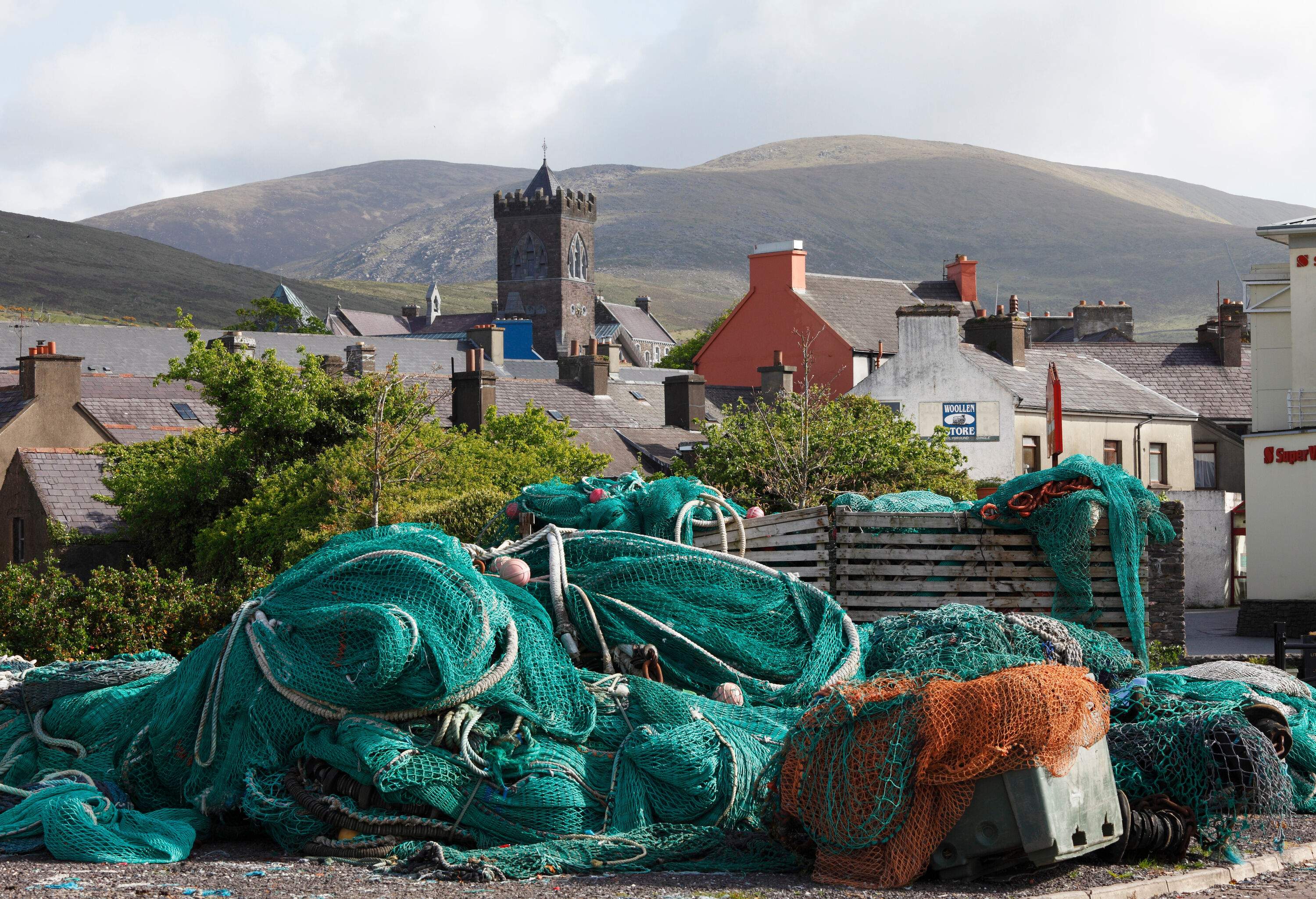
Distance from Loop Head: 150 km/ 93 miles – 3.5 hours (includes a ferry)
Today is one of driving, with folklore, legends, and waterfalls to keep you entertained along the way!
At the seaside resort of Ballybunion, take a stroll up the cliffs north of town to discover Druid’s Lair, also known as Scolt Na Dhrida. This site is steeped in folklore and legend, associated with Druid worship and ancient Celtic rituals dedicated to the god Mananann.
Set your sat nav for the Conor Pass waterfall, which will be at its best in spring. You can hike up behind the waterfall for fantastic views of the nearby lakes. The pass itself is also a great drive along mostly single-track roads surrounded by interesting rock formations and lush green scenery.
Where to stay in Dingle: Barr Na Sraide Inn is well-located and offers a warm Irish welcome.
Day 4: Waterville (one night)
Distance from Dingle: 109 km/ 68 miles – less than 2 hours
Today you’ll be driving part of the gorgeous Ring of Kerry, a scenic coastal route through rural seaside villages around the Iveragh Peninsula.
Make your way to Kells, a picturesque fishing village, and from there, continue to Cahersiveen, where you can explore the ancient 7th-century Cahergall Stone Fort.
Next, take the chain ferry from Reenard Point to Valentia Island. Here, you can visit the charming red and white Valentia Island Lighthouse and the historic Valentia Transatlantic Cable Station, where the first transatlantic telegraph cable was laid to Heart’s Content in Newfoundland.
Don’t miss the opportunity to follow the Tetrapod Trackway and see fossilized footprints that are a staggering 365 million years old, or take a boat trip to explore Skellig Michael, home to thousands of breeding puffins during the warmer months.
Where to stay in Waterville: The Smugglers Inn has stunning views of Ballinskelligs Bay and gets great reviews.
Day 5: Killarney (one night)
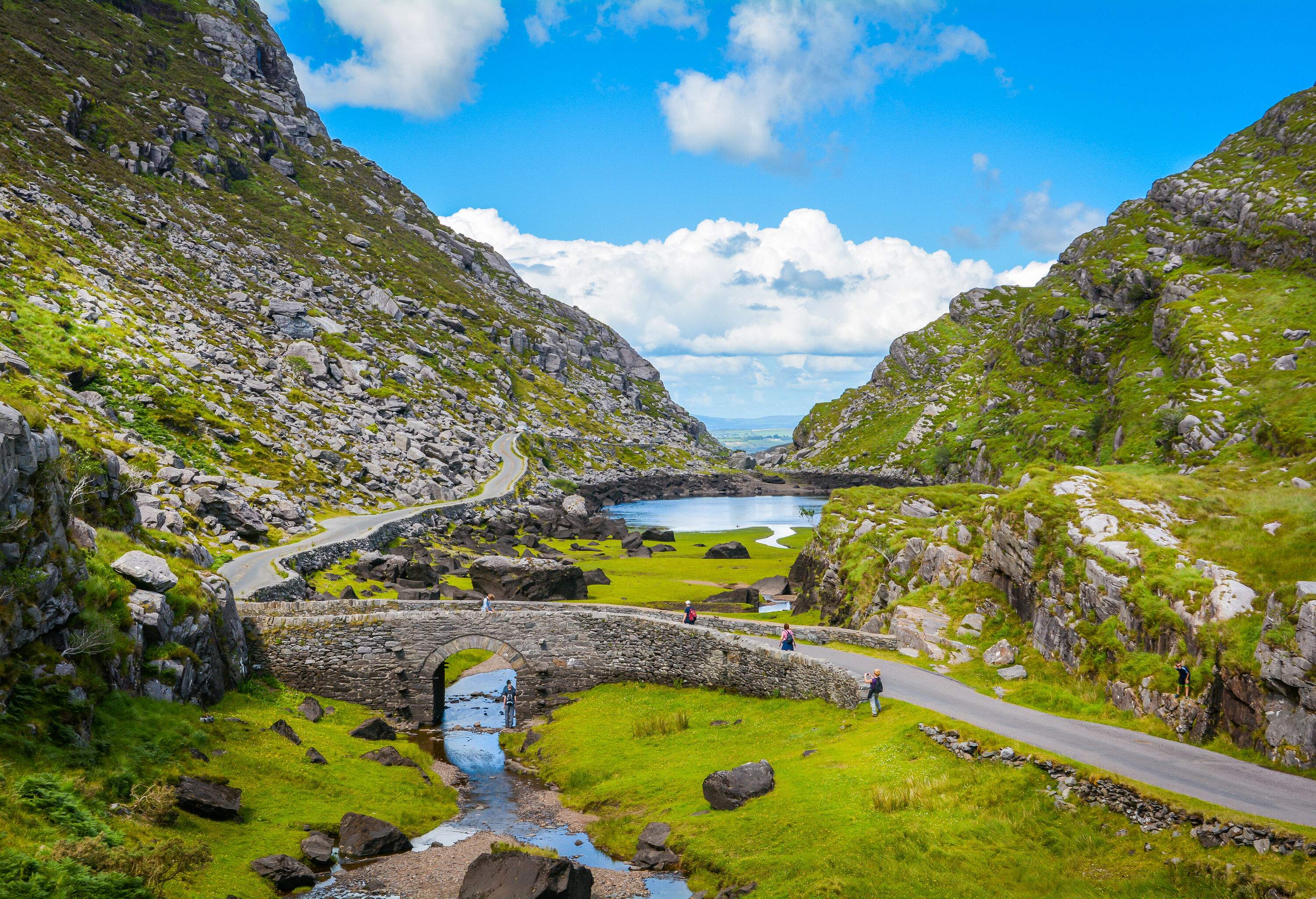
Distance from Waterville: 92 km/ 57 miles – less than 2 hours
Today covers the final leg of the Ring of Kerry before arriving at Killarney, the final stop on your west coast Ireland road trip itinerary.
Your first stop is Caherdaniel best known for Derrynane Beach and Derrynane House and National Park, once the home of the great liberator Daniel O’Connell, the first Irish nationalist leader to hold a seat in Westminster.
Derrynane Beach is a paradise for beach lovers, with its fine sand, clear turquoise waters, and craggy rocks. In the summer, the beach is perfect for swimming and you can also hire kayaks to explore the coastline.
From Caherdaniel, drive to the very Instagrammable village of Sneem before heading north to Killarney to explore the remaining sights of the Ring of Kerry, including Muckross House, Ross Castle, the Gap of Dunloe, and Ladies View.
Where to stay in Killarney: The Ross is in the center of town and offers free parking.
Ireland road trip: Dublin to the Walled City
Days 1 & 2: Dublin (two nights)
The capital city of the Republic of Ireland, Dublin has a complex history marked by Vikings, famines, and wars. The city center retains a historic charm, with cobbled streets, ancient churches, and majestic castles awaiting exploration.
In addition, Dublin is a party city with a wealth of things to do and see. These are some of our favorites:
- Explore the iconic Guinness Storehouse, where you can learn about the brewing process and enjoy a pint of Guinness.
- Immerse yourself in Dublin’s vibrant nightlife scene with a visit to the famous Temple Bar, where you can enjoy pub-hopping and live Irish music.
- Delve into Irish history at the Kilmainham Gaol Museum, a former prison with a fascinating past.
- Marvel at the historic Book of Kells, housed in the Old Library and Long Room at Trinity College, Ireland’s oldest university.
- Discover the story of Irish emigration at The Irish Emigration Museum, located in Dublin’s Docklands.
Where to stay in Dublin: Schoolhouse Hotel offers free parking in a central location.
Day 3: Drogheda (one night)
Distance from Dublin: 87 km/ 54 miles – less than 2 hours
North of Dublin in the Boyne Valley are a cluster of some of Ireland’s most famous historic sites, all of which are close enough to be visited in a day.
Start at the Hill of Tara, one of Ireland’s most mystical sites. An ancient ceremonial and burial ground, as well as the inauguration place and seat of the High Kings of Ireland during the Early Christian period, over 142 kings were crowned here.
Another hill, the Hill of Slane, is a short 25-minute drive north. An important ceremonial site predating the arrival of Christianity, the Hill of Slane is renowned for its association with Saint Patrick, the patron saint of Ireland.
Over 5.5 miles southeast is Newgrange. The UNESCO World Heritage Site located in the Brú na Bóinne Valley is a Neolithic passage tomb of immense historical significance.
Accessible only via guided tours, Newgrange and its neighboring site, Knowth, predate the Great Pyramids of Giza and offer fascinating insights into Ireland’s ancient past.
Finally, make a stop at the Battle of the Boyne Visitor Centre at Drybridge. Here you can find out about the battle that took place in 1690 between the forces of King William III and those of King James II, during the Williamite War in Ireland.
Where to stay in Drogheda: Buvinda is close to your final stop of the day and receives excellent reviews.
Day 4: Belfast (one night)
Distance from Drogheda: 120 miles – 1.5 hours (note that the distances are now only shown in miles as Northern Ireland is part of the UK and uses miles to measure road distance)
Today you’ll be driving north to Belfast, skirting the gorgeous Mourne Mountains before crossing the border from the Republic of Ireland into Northern Ireland.
The capital of Northern Ireland, Belfast has emerged from its troubled past to become a captivating destination and serves as the starting point for the renowned Causeway Coastal Route.
Begin your journey at the Titanic Belfast Museum in the Titanic Quarter, where you can delve into the story of the legendary ocean liner and its fateful journey across the Atlantic.
Another must-see attraction is the Crumlin Road Gaol, Northern Ireland’s last remaining Victorian-era prison.
For a deeper understanding of Belfast’s recent history, take a Belfast political taxi tour in a black cab. You’ll explore the city’s neighborhoods, visit the peace wall, and see the political murals.
Where to stay in Belfast: Hampton by Hilton Belfast City Centre is well located for your journey to and from Belfast and has good parking nearby.
Day 5: Cushendall (one night)
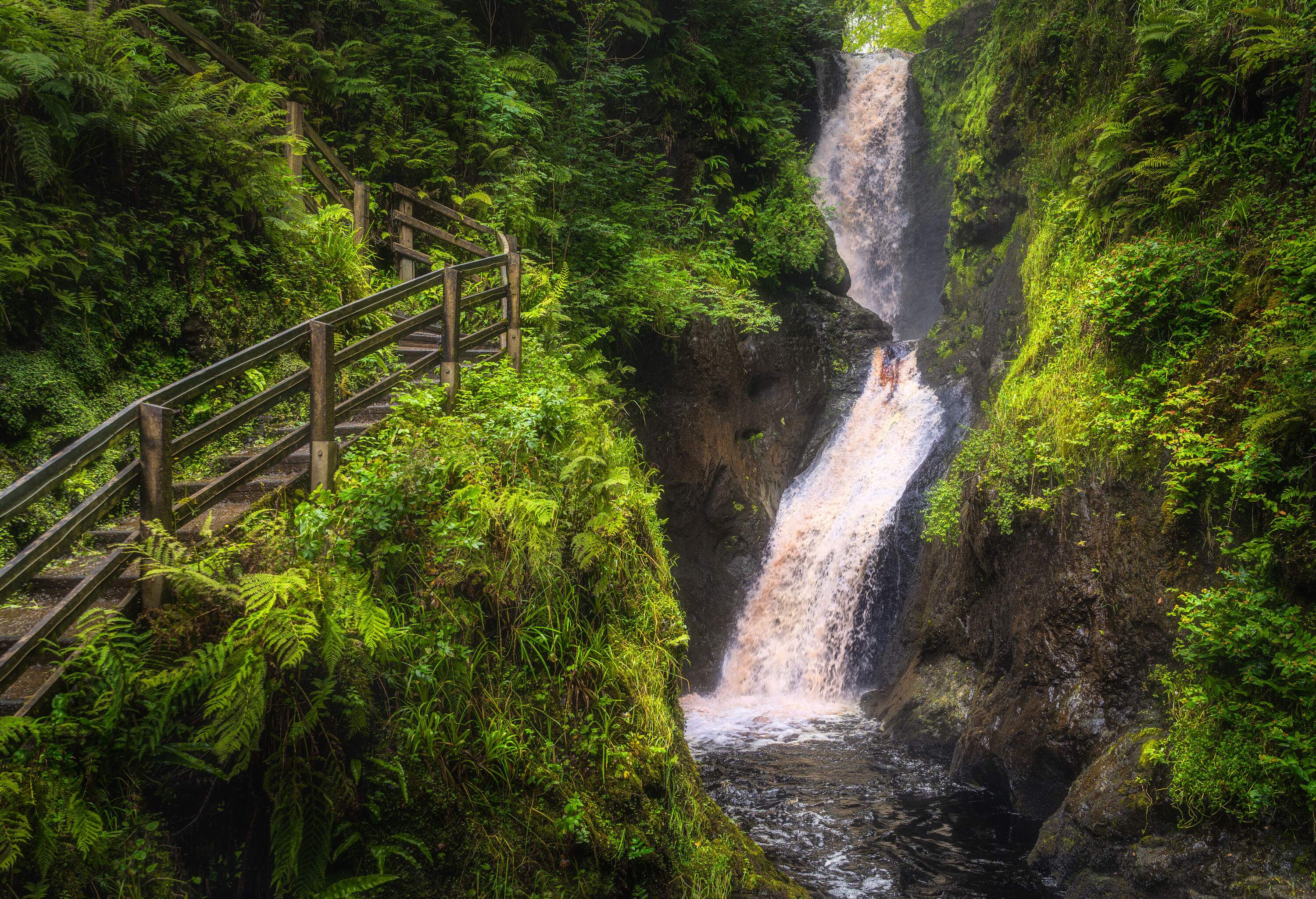
Distance from Belfast: 51 miles – 1.5 hours
Make sure to get an early start as today you have a packed itinerary!
First up is the brilliant Gobbins Cliff Path, a 40-minute drive up the coast from Belfast. The Gobbins offers a unique walking experience along the stunning coastline with breathtaking views, thrilling bridges, and fascinating caves. The area is renowned for its diverse birdlife, geological significance, and unique species.
Head north for around an hour to Glenariff, known as the Queen of the Glens. Glenariff Forest Park has a delightful 2-mile waterfall walk winding through lush woodland, past three stunning cascades and clear pools.
The park is home to endangered species like the red squirrel and Irish hare. Longer trails, including the 5-mile Scenic Trail, offer spectacular views and wildlife sightings.
Finally, you’ll arrive in Cushendall, home to the fabulous Cushendall Beach. Located at the southern end of the crescent-shaped beach, the Cushendun Caves were formed over 400 million years ago, gradually shaped by the forces of wind and water.
Where to stay in Cushendall: Mcnaughton Guestrooms is a bed and breakfast in the heart of the village.
Day 6: Ballycastle (one night)
Distance from Cushendall: 16 miles – 30 minutes
Take the coast road north and be prepared for some spectacular scenery! Look out for signs for the Torr Head Scenic Route where you’ll pick up a steep and narrow road to the headland. Upon reaching the top, visitors can enjoy the views and explore the remains of an ancient promontory fort and customs house.
It’s a 20-minute drive to Ballycastle, renowned for its vibrant craft market, sea kayaking opportunities, and Ballycastle Strand.
Where to stay in Ballycastle: The Salthouse Hotel is a luxury hotel in a fantastic rural location.
Days 7 & 8: Bushmills (two nights)
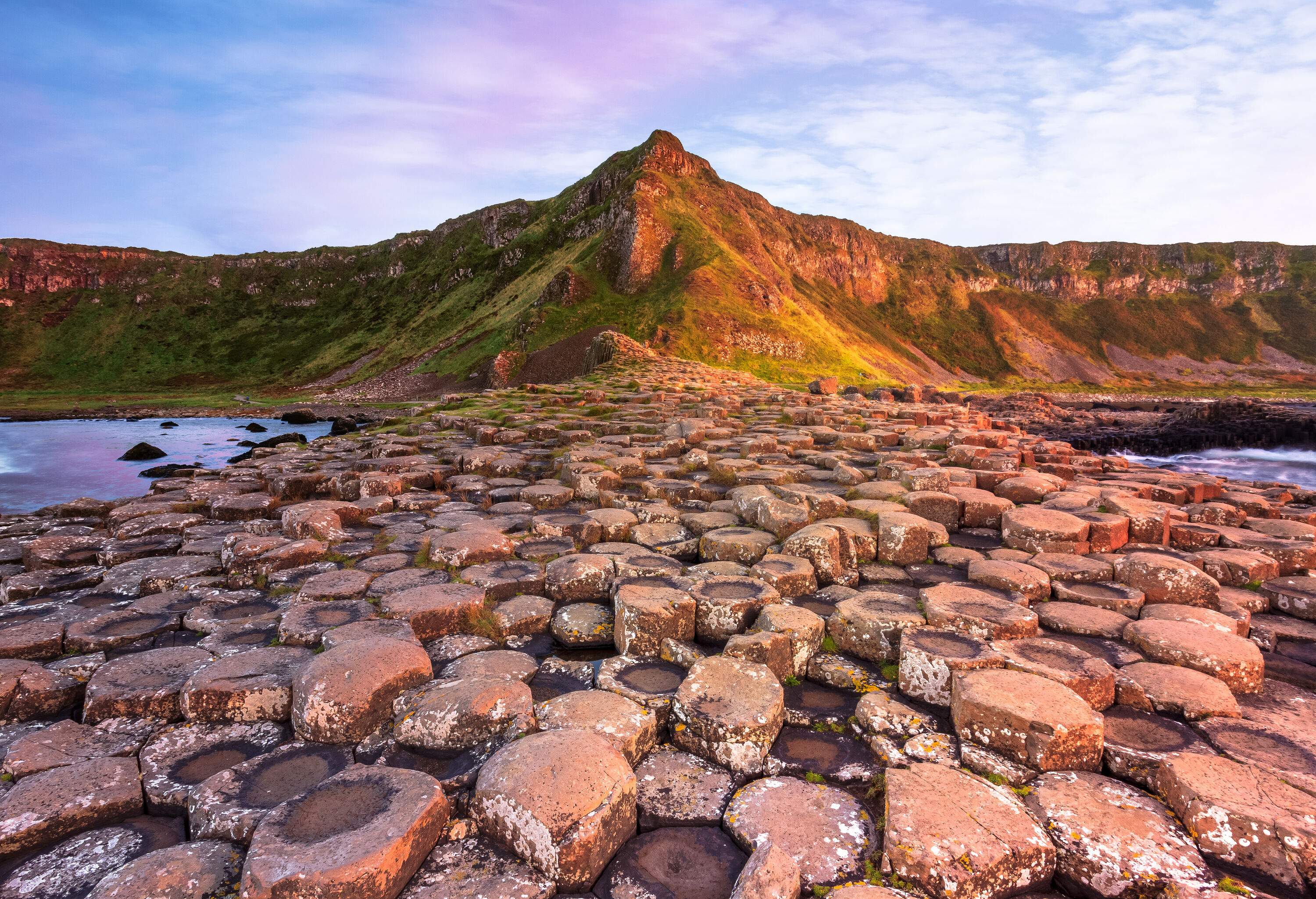
Distance from Ballycastle: 15 miles – 30 minutes
First up today is the Carrick-a-Rede Rope Bridge, suspended almost 100 feet above the sea. The bridge links the mainland to the tiny island of Carrickarede and you can brave the thrilling walk across the bridge and enjoy a short coastal hike along windswept cliffs and meandering paths, offering uninterrupted views of Rathlin Island and the coastline.
Next up is one of our favorite places in Northern Ireland, tiny Ballintoy Harbour. Its picturesque charm made it a favorite among those in the know and for years only locals visited.
Its popularity due to it being a filming location for a famous TV series has made the car park difficult to access, especially during the summer months. But venture away from the harbor in either direction, and you’ll discover secret beaches, hidden coves, and fascinating rock formations, including Elephant Rock to the west.
Your final visit of the day, the Dunseverick Falls run off the cliffs straight into the Atlantic Ocean, and Dunseverick Castle, a promontory fort and an ancient royal site of the Dál Riada Gaelic kingdom.
Day eight is all about the mighty Giant’s Causeway. A UNESCO-protected site, this geological wonder comprises over 40,000 interlocking hexagonal basalt columns, formed by a volcanic eruption around 60 million years ago. According to local legend, the giant Finn McCool built these columns as a causeway to Scotland.
You can walk out along the columns surrounded by sea or take one of the four free walking trails of various distances, each offering a different experience.
Alternatively, climb the Shepherd’s Steps and wander along the top of the Organ Pipes, hexagonal columns of solidified lava that reach heights of almost 40 feet and resemble the pipes of a grand cathedral organ.
Bushmills, just a few miles along the coast road is the home of the historic Old Bushmills Distillery which was established in 1608, making it the oldest licensed distillery in the world!
Where to stay in Bushmills: The Bushmills Inn was originally a coaching inn and is the perfect spot to explore the nearby coast.
Days 9 & 10: Londonderry (two nights)
Distance from Bushmills: 50 miles – 1.5 hours
Not far from Bushmills lies medieval Dunluce Castle. The ruins of this historic fortress, once the seat of Clan MacDonnell, offer a glimpse into the past, with tales of battles and sieges.
You can enjoy a spectacular view of the castle from the Magheracross Viewing Point on the coast road or visit the castle grounds and ruins by crossing the small stone bridge from the mainland. Beneath the castle lies the vast 300 feet Mermaid’s Cave, which can be explored when you descend its 115 steps!
A bit further west is Portstewart, a charming seaside town that boasts a long stretch of Blue Flag beach with epic waves from the Atlantic Ocean. The waterfront Promenade is lined with independent shops, including the iconic Morelli’s, Northern Ireland’s favorite ice cream parlor.
Continue on the coast road and stop at Downhill to see the beautiful Mussenden Temple. An 18th-century architectural gem, the temple sits proudly atop a dramatic cliff edge overlooking Downhill Strand (another film location) and the ocean.
From here, it’s a short drive to the vast Benone Beach, a real hidden gem on the Antrim coast. Backed by the Umbra Nature Reserve and grassy dunes, the area is perfect for a picnic or stroll.
The drive to Derry/Londonderry skirts mighty Binevenagh, formed by volcanic activity 60 million years ago. Binevenagh’s towering cliffs extend for over six miles and dominate the surrounding landscape.
If you have time, drive the Bishop’s Road and stop at Gortmore Viewpoint, for fabulous views and the sculpture of Manannan Mac Lir, a local sea god.
Spend day 10 exploring Derry/Londonderry. This historically significant walled city, situated on the banks of the River Foyle, boasts a rich cultural and political heritage.
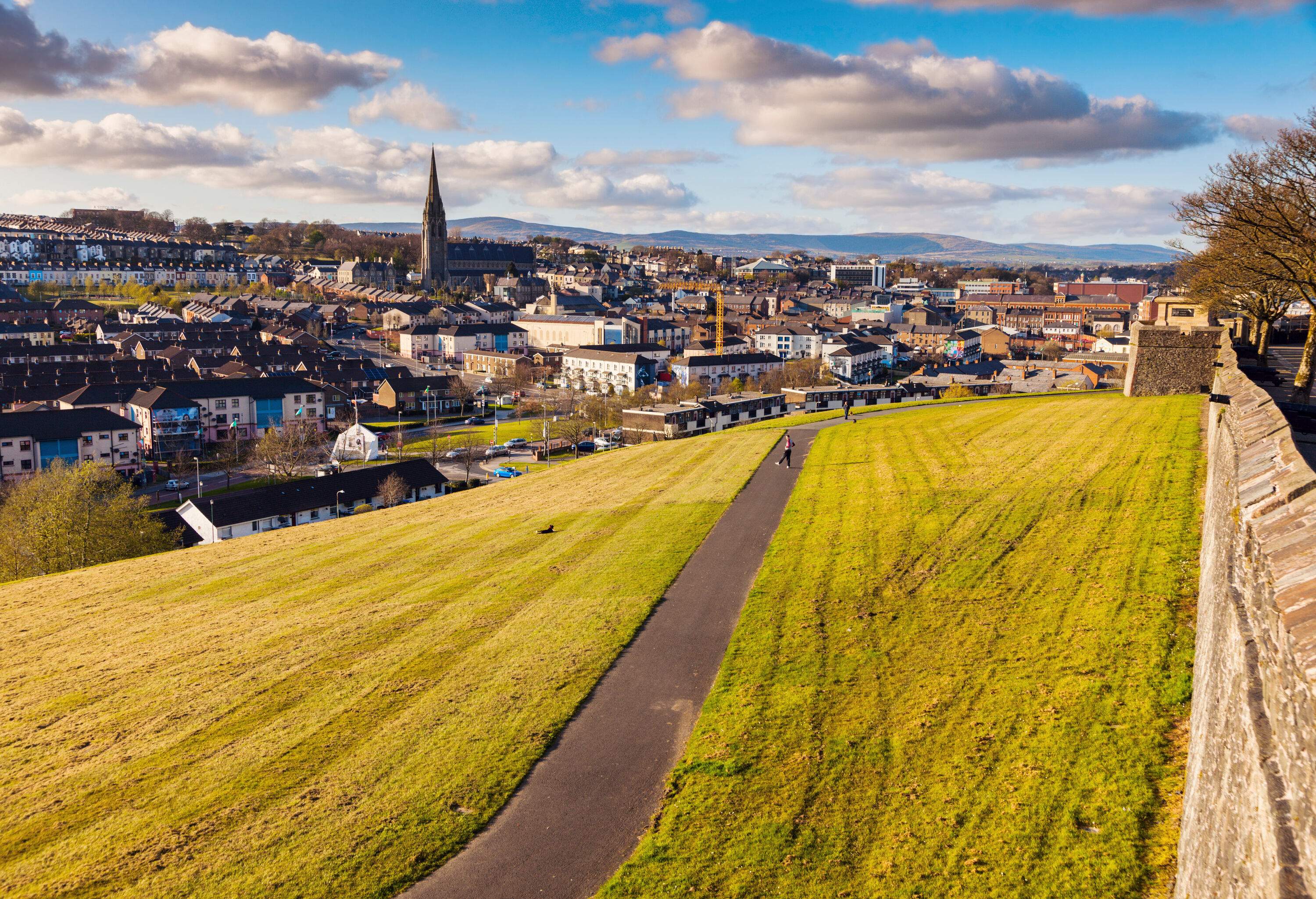
Founded as far back as the 6th century, Derry has played a pivotal role throughout history. It was a focal point during the Troubles, a period of conflict in Northern Ireland from the late 1960s to the late 1990s. Today, it is a vibrant cultural hub, renowned for its historic landmarks, bustling nightlife, and warm hospitality.
The city’s most iconic feature is its 17th-century walls, among the best-preserved in Europe.
The city is also home to several outstanding museums, including the Museum of Free Derry, which tells the poignant story of government oppression, the fight for civil rights, and the descent into conflict.
Other notable attractions include the reconstructed 18th-century Craft Village, the Gothic St. Columb’s Cathedral, and the modern Peace Bridge spanning the River Foyle, connecting the city center with Ebrington Square, a former military heritage site.
Where to stay in Londonderry: No 8 The Townhouse is in a perfect location and has excellent reviews.
Conclusion
After completing your road trip around Ireland, you will have explored some of the most breathtaking destinations on the Emerald Isle.
From the awe-inspiring landscapes of the Ring of Kerry and the Antrim Coast to the quaint villages of County Clare, and everything in between, you will have ticked off some of Ireland’s most iconic sights from your bucket list and have many precious memories.
Use our guide to start planning your Irish road trip today and experience the incredible tapestry of culture, history, and natural wonders of the island of Ireland.
Disclaimer: The hotel recommendations included in this article are based on customer ratings and the author’s personal choices, so please feel free to use our hotel search tool to find the accommodation best suited to your needs.

